新自由主義
neo-liberalism
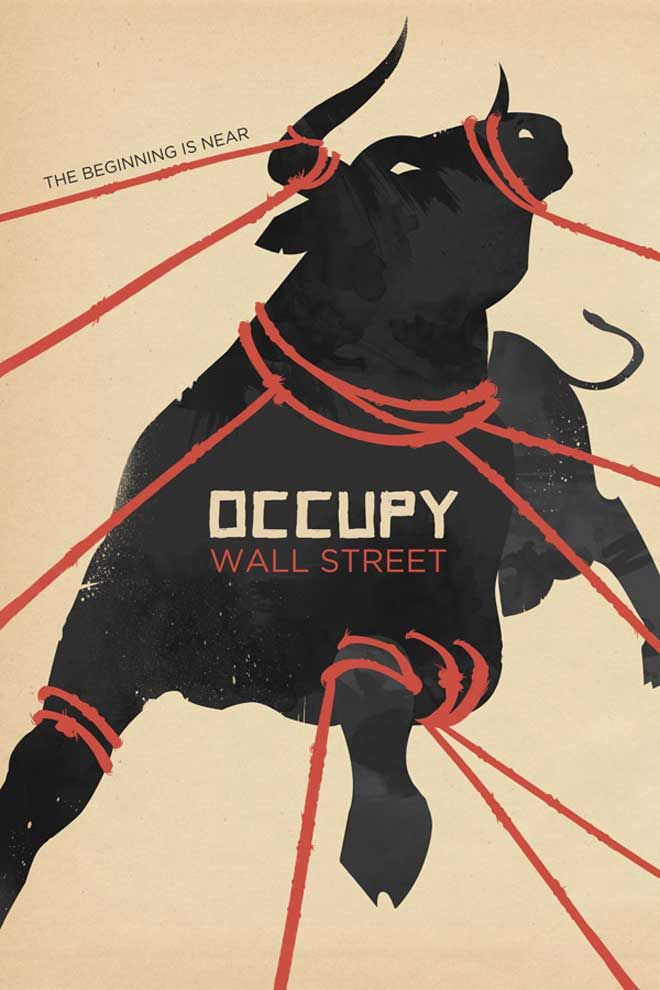
新自由主義
neo-liberalism

新自由主義は、ネオリベラリズム(neo- liberalism)とも言われる。新自由主義を奉じる者を、ネオリベラル(neo-liberal)と呼ぶ。その起源は、1930年代のフリードリ ヒ・ハイエク(Friedrich August von Hayek, 1899-1992)オーストリア学派の自由主義思想に淵源し、集産主義と計画主義は、市場の自由な活動を阻害し、市場を完全に理解のもとに把握すること の不可知論の立場をとり、自らの利益や選考を優先することにで、経済はうまくまわると考えた。国家による市民生活への介入を忌み、銃火器も知性と徳を備え た人には取引や所有は可能と考えた。フランス革命のような理性に至高の価値をあたえることを警戒し、自然発生的な秩序の維持のみを国家はマネージすべきだ と考えた。このようなハイエクの思想は、リバータリアン的な自由主義であり、ハイエクは自由主義の範囲にいると考える論者も多い。
たしかに21世紀におけるネオリベラル、新自由主義は、冷戦終焉後の1991年以降、世界銀行が打ち出した開発途上国に 対する政治経済の構造調整政策を受け入れることを通して、融資条件とする、「ワシントンコンセンサス」ならびに1990年代後半の「第二ワシントンコンセ ンサス」を起源とする、国際間の合意にもとづいて政府が透明性を確保し、政府による 民業への介入を極小化し、社会経済システムの完全民営化による、自由な社会的競争条件こそが、市民的自由を保証するというテーゼ(命題)や施策のことで ある。繰り返すと、新自由主義とは国際間の合意にもとづいて政府が透明性を確保し、社会経済システムの完全民営化による、自由な 社会的競争条件こそが、市民的自由を保証するというテーゼ(命題)や 施策のことである。その意味では、新自由主義時代の政策はかつての「夜警国家」 と類似する。いうまでもないが、新自由主義にもとづく国家経営の対極は福祉国家(welfare state)である。
こう考えると、マーガレット・サッチャー (Margaret Hilda Thatcher, 1925-2013)の第71代英国首相期間(1979年5月〜1990年11月)や、ロナルド・レーガン(Ronald Wilson Reagan, 1911-2004)の第40代米国大統領期間(1981年1月〜1989年1月)の1980年代が、新自由主義の嚆矢期で、1990年代にさらにそれが 政治経済理論として整備されて世銀や国際通貨基金の政策の基本となった。
ネオリベラリズムは、福祉国家による最低保証の政策 は維持するリベラリズムとは相性が悪く、アメリカ合衆国では、911のニューミレニアム以降さまざまな形でネオリベに対する抗議活動が展開し、2011年 1月のウォール街占拠運動(Occupy Wall Street)でその活動の頂点を迎える。
"Neoliberalism or neo-liberalism[1] is the 20th-century resurgence of 19th-century ideas associated with economic liberalism and free-market capitalism.[2]:7[3] It is generally associated with policies of economic liberalization, including privatization, deregulation, globalization, free trade, austerity, and reductions in government spending in order to increase the role of the private sector in the economy and society;[4] however, the defining features of neoliberalism in both thought and practice have been the subject of substantial scholarly debate.[ In policymaking, neoliberalism was part of a paradigm shift that followed the failure of the Keynesian consensus in economics to address the stagflation of the 1970s." - Neoliberalism
「新自由主義(ネオリベラリズム)とは、経済自由主
義や自由市場資本主義に関連する19世紀の思想が20世紀に復活したものである。一般的には、経済や社会における民間部門の役割を高めるために、民営化、
規制緩和、グローバリゼーション、自由貿易、緊縮財政、政府支出の削減などの経済自由化政策と結びついている。しかし、思想と実践の両面における新自由主義の決定的な特徴は、学者間でかなりの議論の対象となってき
た。政策立案において、新自由主義は、1970年代のスタグフレー
ションに対処するための経済学におけるケインズ派のコンセンサスの失敗に続くパラダイム・シフトの一部であった。」
1. Vincent, Andrew
(2009). Modern Political Ideologies. Hoboken, New Jersey:
Wiley-Blackwell. p. 337. ; 2: Haymes, Stephen; Vidal de Haymes, Maria;
Miller, Reuben, eds. (2015). The Routledge Handbook of Poverty in the
United States. London: Routledge; 3. Bloom, Peter (2017). The Ethics of
Neoliberalism: The Business of Making Capitalism Moral. Routledge. pp.
3, 16.; Goldstein, Natalie (2011). Globalization and Free Trade.
Infobase Publishing. p. 30; 12.


Occupy Wall Street
(OWS) was a 59-day left-wing populist movement against economic
inequality and the influence of money in politics that had begun in
Zuccotti Park, located in New York City's Wall Street financial
district, and lasted from September 17 to November 15, 2011.[7] The
protests gave rise to the wider Occupy movement in the United States
and other Western countries. The Canadian anti-consumerist magazine
Adbusters initiated the call for a protest.[8] The main issues raised
by Occupy Wall Street were social and economic inequality, greed,
corruption and the undue influence of corporations on
government—particularly from the financial services sector. The OWS
slogan, "We are the 99%", refers to income and wealth inequality in the
U.S. between the wealthiest 1% and the rest of the population. To
achieve their goals, protesters acted on consensus-based decisions made
in general assemblies which emphasized redress through direct action
over the petitioning to authorities.[9][nb 1] The protesters were
forced out of Zuccotti Park on November 15, 2011. Protesters then
turned their focus to occupying banks, corporate headquarters, board
meetings, foreclosed homes, college and university campuses and social
media. - https://en.wikipedia.org/wiki/Occupy_Wall_Street.
「ウォール街を占拠せよ(OWS)は、経済的不平等と政治における金の影響に反対する59日間の左翼ポピュリズム運動であり、ニューヨークのウォール街金 融街にあるズコッティ・パークで始まり、2011年9月17日から11月15日まで続いた[7]。「ウォール街を占拠せよ」が提起した主な問題は、社会 的・経済的不平等、貪欲、腐敗、政府に対する企業の不当な影響力(特に金融サービス部門)であった。OWSのスローガンである「We are the 99%」は、アメリカにおける1%の富裕層とそれ以外の人々との間の所得と富の不平等を指している。彼らの目標を達成するために、抗議者たちは、当局への 請願よりも直接行動による救済を重視した総会での合意に基づく決定に基づいて行動した[9][nb 1]。2011年11月15日、抗議者たちはズコッティ・パークから強制退去させられた。抗議者たちはその後、銀行、企業本部、取締役会、差し押さえられ た家、大学キャンパス、ソーシャルメディアを占拠することに焦点を当てた」 - https://en.wikipedia.org/wiki/Occupy_Wall_Street.
***
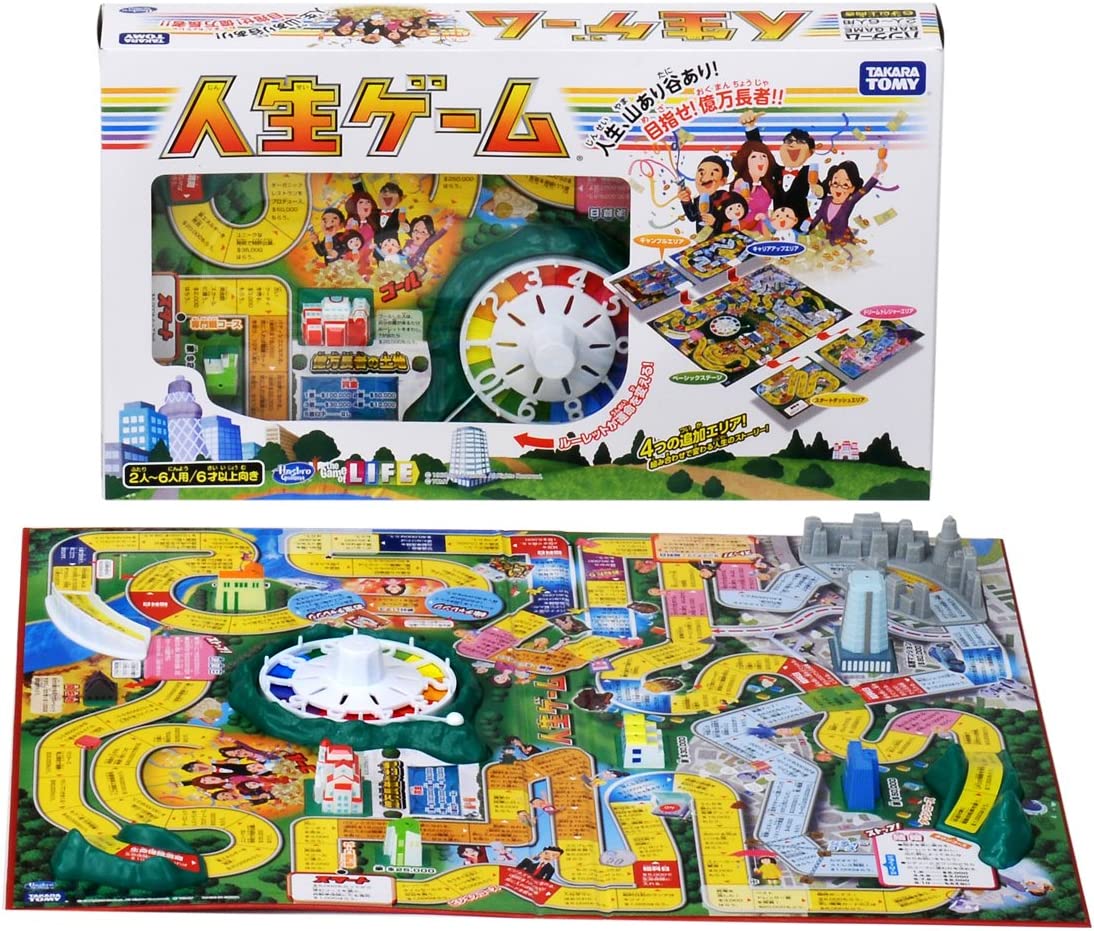
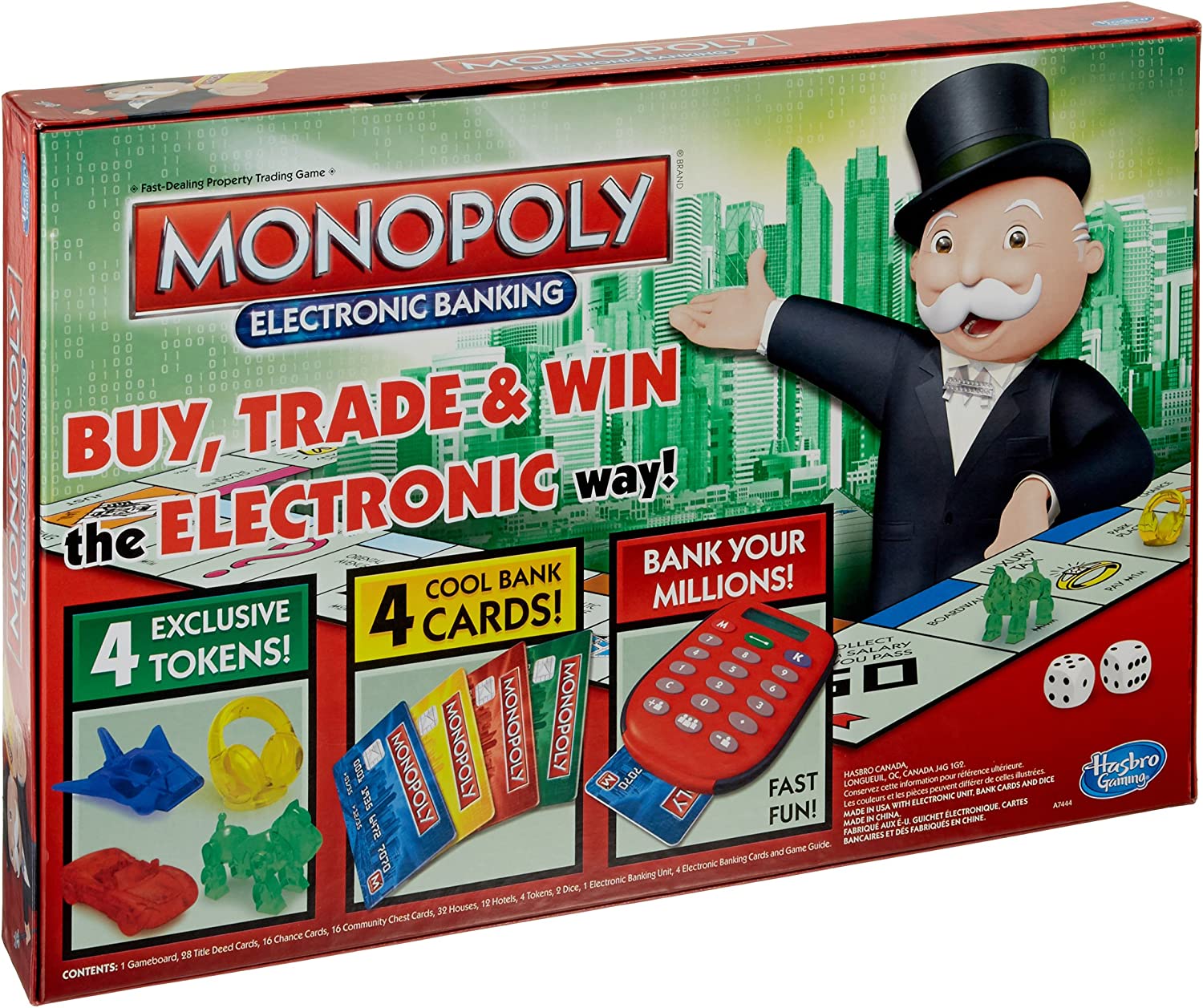
Allegory of
Neo-Libefral Capitalism
★【特別ふろく】フリードリヒ・ハイエク(Friedrich August Hayek, 1899-1992)
☆フリードリヒ・アウグスト・フォン・ハイエク(1919年以降、フリードリヒ・アウグスト・ハイエク、1899年5月8日、ウィーン生まれ、1992年3 月23日、フライブルク・イム・ブライスガウで死去)は、オーストリアの経済学者、社会哲学者だった。彼は新自由主義の理論家であり、20世紀の自由主義 の最も重要な思想家の一人だった。ルートヴィヒ・フォン・ミーゼスと並んで、ハイエクはオーストリア経済学派の最も重要な代表者の一人だった。1974 年、彼はグンナー・ミヤルダルとともにアルフレッド・ノーベル記念経済学賞を受賞した。[4] 価格理論、すなわち価格が情報を伝達し、経済活動を制御する方法に関する彼の研究は、経済学への彼の最も重要な貢献と見なされている
| Friedrich August von Hayek,
ab 1919 Friedrich August Hayek (* 8. Mai 1899 in Wien; † 23. März 1992
in Freiburg im Breisgau) war ein österreichischer Ökonom und
Sozialphilosoph.[1] Er war ein Theoretiker des Neoliberalismus und
zählt zu den wichtigsten Denkern des Libertarismus[2] im 20.
Jahrhundert.[3] Neben Ludwig von Mises war Hayek einer der
bedeutendsten Vertreter der Österreichischen Schule der
Nationalökonomie. 1974 erhielt er zusammen mit Gunnar Myrdal den
Alfred-Nobel-Gedächtnispreis für Wirtschaftswissenschaften.[4] Seine
Arbeiten zur Preistheorie, d. h., wie Preise Informationen übertragen
und ökonomische Tätigkeiten steuern, werden als sein wichtigster
Beitrag zur Wirtschaftswissenschaft angesehen.[5][4][6][7][8] Friedrich von Hayeks Dienst im Ersten Weltkrieg und der Wunsch, Kriege zu verhindern, zogen ihn nach eigener Aussage zur Wirtschaftswissenschaft.[9][10] An der Universität Wien studierte er diese sowie Philosophie und Psychologie; er promovierte 1921 in Rechtswissenschaften und 1923 in Politikwissenschaft.[9][11] Anschließend arbeitete er in Österreich, Großbritannien, den USA und Deutschland. 1938 nahm er als Friedrich August von Hayek die britische Staatsbürgerschaft an. Er verbrachte sein akademisches Leben hauptsächlich an der London School of Economics, der University of Chicago und der Universität Freiburg. Obwohl als bedeutender Vertreter der Österreichischen Schule angesehen, hatte er auch enge Beziehungen zur Chicagoer Schule.[12] Hayek war außerdem ein bedeutender Sozialtheoretiker und politischer Philosoph des 20. Jahrhunderts und trug als Mitbegründer der Mont Pèlerin Society zur Wiederbelebung des Liberalismus in der Nachkriegszeit bei.[8] Sein populärstes Werk, Der Weg zur Knechtschaft (The Road to Serfdom), wurde weltweit über 2,25 Millionen Mal verkauft (Stand 2020).[13][14] Hayek wurde 1984 zum Companion of Honour für seine Verdienste um die Weiterentwicklung der Wirtschaftswissenschaften ernannt.[15] Er war der erste Empfänger des Hanns-Martin-Schleyer-Preises im Jahr 1984.[16] Außerdem erhielt er 1991 die Presidential Medal of Freedom von US-Präsident George H. W. Bush.[17] Im Jahr 2011 wurde sein Artikel The Use of Knowledge in Society als einer der 20 besten Artikel ausgewählt, die bisher im The American Economic Review veröffentlicht wurden.[18][19] |
フリードリヒ・アウグスト・フォン・ハイエク(1919年以降、フリー
ドリヒ・アウグスト・ハイエク、1899年5月8日、ウィーン生まれ、1992年3月23日、フライブルク・イム・ブライスガウで死去)は、オーストリア
の経済学者、社会哲学者だった。彼は新自由主義の理論家であり、20世紀の自由主義の最も重要な思想家の一人だった。ルートヴィヒ・フォン・ミーゼスと並
んで、ハイエクはオーストリア経済学派の最も重要な代表者の一人だった。1974年、彼はグンナー・ミュルダールとともにアルフレッド・ノーベル記念経済
学賞を受賞した。[4]
価格理論、すなわち価格が情報を伝達し、経済活動を制御する方法に関する彼の研究は、経済学への彼の最も重要な貢献と見なされている。[5][4][6]
[7][8] フリードリヒ・ハイエクは、第一次世界大戦での従軍経験と、戦争を防止したいという思いから、経済学に惹かれたと語っている。[9][10] ウィーン大学で経済学、哲学、心理学を学び、1921年に法学博士号、1923年に政治学博士号を取得した。[9][11] その後、オーストリア、イギリス、アメリカ、ドイツで働いた。1938年、フリードリヒ・アウグスト・フォン・ハイエクとしてイギリス国籍を取得した。学 業は主にロンドン・スクール・オブ・エコノミクス、シカゴ大学、フライブルク大学で行った。オーストリア学派の重要な代表者と見なされていたが、シカゴ学 派とも密接な関係があった。[12] ハイエクは、20 世紀の重要な社会理論家、政治哲学者でもあり、モンペレラン協会の共同創設者として、戦後の自由主義の復活に貢献した。[8] 彼の最も人気のある著作『奴隷への道』は、2020 年時点で世界中で 225 万部以上販売されている。[13][14] ハイエクは、経済学の発展への貢献が認められ、1984年に名誉勲章(Companion of Honour)を授与された。[15] 1984年には、ハンス・マルティン・シュレイヤー賞(Hanns-Martin-Schleyer-Preis)の最初の受賞者となった。[16] また、1991年には、ジョージ・H・W・ブッシュ米大統領から大統領自由勲章(Presidential Medal of Freedom)を授与された。[17] 2011年、彼の論文「社会における知識の利用」は、The American Economic Review にこれまで掲載された論文の中で、ベスト20に選ばれた。[18][19] |
| Leben Frühe Kindheit und Schulzeit 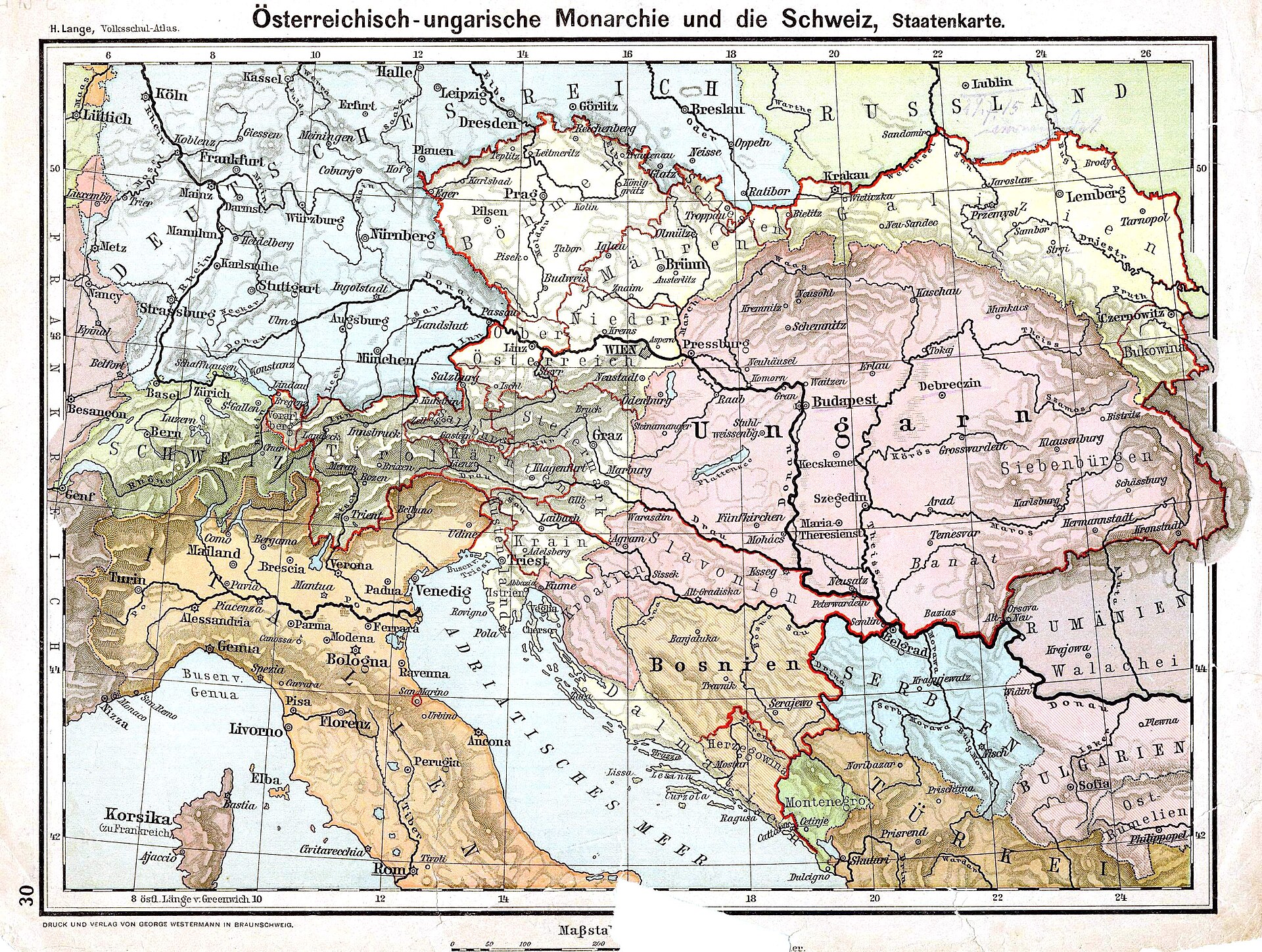 Österreich-Ungarn im Jahr 1899 Hayek wurde als Friedrich August Edler von Hayek in Wien als Sohn des August Edlen von Hayek und der Felicitas Hayek (geborene von Juraschek) geboren. Sein Ur-Urgroßvater Josef Hayek (1750–1830) war am 11. August 1789 durch Kaiser Joseph II. in seiner Eigenschaft als König von Böhmen als Edler von Hayek in den erblichen böhmischen Adelsstand erhoben worden.[20] Friedrich August von Hayek trug aufgrund des Adelsaufhebungsgesetzes von 1919 bis zu seiner Einbürgerung im Vereinigten Königreich 1938 den Namen Friedrich August Hayek. Der Familienname Hayek verwendet die deutsche Schreibweise des tschechischen Familiennamens Hájek. Sein 1871 ebenfalls in Wien geborener Vater war Arzt beim städtischen Gesundheitsministerium. Er hatte eine Leidenschaft für Botanik, über die er eine Reihe von Monographien verfasste, und war nebenberuflich als Dozent für Botanik an der Universität Wien tätig. Felicitas von Juraschek wurde 1875 in eine wohlhabende konservative und landbesitzende Familie geboren. Als ihre Mutter einige Jahre vor Hayeks Geburt starb, erhielt Felicitas eine bedeutende Erbschaft, die in den ersten Jahren ihrer Ehe etwa die Hälfte des Einkommens der Familie ausmachte. Friedrich war der älteste von drei Söhnen; seine Brüder Heinrich (1900–1969) und Erich (1904–1986) waren eineinhalb und fünf Jahre jünger als er.[21] Die Karriere seines Vaters als Universitätsprofessor beeinflusste Hayeks spätere Lebensziele.[22] Seine beiden Großväter, welche Hayek noch persönlich kennenlernte, waren ebenfalls Akademiker. Franz von Juraschek war ein führender Ökonom in Österreich-Ungarn und ein enger Freund von Eugen Böhm von Bawerk, einem der Begründer der Österreichischen Schule. Hayeks Großvater väterlicherseits, Gustav Edler von Hayek, unterrichtete Naturwissenschaften am kaiserlichen Realobergymnasium in Wien. Er schrieb Arbeiten auf dem Gebiet der biologischen Systematik, von denen einige relativ bekannt sind.[23] Hayeks Mutter Felicitas war eine Cousine 2. Grades von Ludwig Wittgenstein. Seine Mutter spielte oft mit Wittgensteins Schwestern und kannte ihn gut. Aufgrund ihrer familiären Beziehung war Hayek einer der ersten, der Wittgensteins Tractatus Logico-Philosophicus las, als das Buch 1921 in seiner deutschen Originalausgabe veröffentlicht wurde. Obwohl er Wittgenstein nur wenige Male traf, sagte Hayek, dass Wittgensteins Philosophie und Analysemethoden einen tiefgreifenden Einfluss auf sein eigenes Leben und Denken hatten.[24] In seinen späteren Jahren erinnerte sich Hayek an eine Diskussion über Philosophie mit Wittgenstein, als beide während des Ersten Weltkriegs Offiziere waren.[25] Nach Wittgensteins Tod hatte Hayek zunächst vorgehabt, eine Biographie über Wittgenstein zu schreiben. Er arbeitete an der Sammlung von Familienmaterialien, aber half dann stattdessen anderen Biographen.[26] Hayek zeigte schon in jungen Jahren eine starke intellektuelle und akademische Neigung. Er las fließend und häufig, bevor er zur Schule ging.[27] Trotz seiner Intelligenz und Neugier war er in der Schule aufgrund mangelnden Interesses und einiger Probleme mit seinen Lehrern ziemlich schlecht, was ihn zwang, die Schule zu wechseln. Er war in den meisten Fächern am unteren Ende seiner Klasse und erhielt in einem Schuljahr drei nicht bestandene Noten in Latein, Griechisch und Mathematik.[28] Er interessierte sich sehr für das Theater und versuchte, eigene Tragödien zu schreiben. Außerdem half er seinem Vater regelmäßig bei seiner botanischen Arbeit und verfasste eigene Artikel über Biologie.[29] Auf Vorschlag seines Vaters las Hayek als Jugendlicher die genetischen und evolutionsbiologischen Werke von Hugo de Vries und August Weismann, sowie die philosophischen Werke von Ludwig Feuerbach.[30] Er bezeichnete Goethe als seinen größten frühen intellektuellen Einfluss.[29] In der Schule wurde Hayek von den Vorlesungen eines Lehrers über die Nikomachische Ethik von Aristoteles sehr beeindruckt.[31] In seinen unveröffentlichten autobiografischen Notizen erinnerte sich Hayek an eine gewisse Distanz zu seinen jüngeren Brüdern, die nur wenige Jahre jünger waren als er. Hayek glaubte, dass sie einer anderen Generation angehörten. Er zog es stattdessen vor, mit Erwachsenen in Kontakt zu treten.[32] 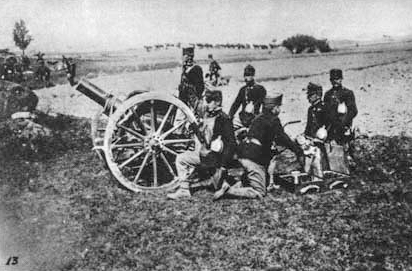 Österreichisch-ungarische Artillerieeinheit 1914 1917 trat Hayek einem Artillerie-Regiment der österreichisch-ungarischen Armee bei und kämpfte im Ersten Weltkrieg an der italienischen Front. Ein Großteil seiner Kriegszeit verbrachte er als Spotter in einem Flugzeug. Hayek erlitt während des Krieges einen Gehörschaden am linken Ohr und wurde später für Tapferkeit ausgezeichnet.[33] Während dieser Zeit überlebte Hayek auch die Spanische Grippe.[34] Hayek entschied sich dann für eine akademische Karriere, entschlossen, die Fehler zu vermeiden, die zum Krieg geführt hatten. Hayek sagte über diese Erfahrung: „Der entscheidende Einfluss war wirklich der Erste Weltkrieg. Er lenkte meine Aufmerksamkeit auf die Probleme der politischen Organisation.“ Er schwor sich, für eine bessere Welt zu arbeiten.[35] |
生涯 幼少期と学生時代  1899年のオーストリア・ハンガリー帝国 ハイエクは、ウィーンで、アウグスト・エドラー・フォン・ハイエクとフェリシタス・ハイエク(旧姓ユラシェック)の息子として、フリードリヒ・アウグス ト・エドラー・フォン・ハイエクとして生まれた。彼の曽祖父ヨゼフ・ハイエク(1750年~1830年)は、1789年8月11日に、ボヘミア国王として の権限を持つ皇帝ヨーゼフ2世によって、ハイエク家の貴族としてボヘミアの世襲貴族の地位に昇格した。[20] フリードリヒ・アウグスト・フォン・ハイエクは、1919年の貴族廃止法により、1938年に英国で帰化するまで、フリードリヒ・アウグスト・ハイエクと いう名前で知られていた。ハイエクという姓は、チェコ語の姓ハジェクをドイツ語表記にしたものだ。 1871年にウィーンで生まれた彼の父親は、市保健省の医師だった。彼は植物学に情熱を注ぎ、一連のモノグラフを執筆し、ウィーン大学で植物学の非常勤講 師も務めていた。フェリシタス・フォン・ユラシェックは、1875年に裕福で保守的な土地所有者の家庭に生まれた。ハイエクが生まれる数年前に母親が亡く なり、フェリシティアスは多額の遺産を相続し、結婚後の最初の数年間は、その遺産が家族の収入の約半分を占めていた。フリードリッヒは3人兄弟の長男で、 弟のハインリッヒ(1900年~1969年)とエーリッヒ(1904年~1986年)は、それぞれ1年半と5歳年下だった。[21] 父親の大学教授としての経歴は、ハイエクの後の人生の目標に影響を与えた。[22] ハイエクが直接面識のあった2人の祖父も、学者を務めていた。フランツ・フォン・ユラシェックは、オーストリア・ハンガリー帝国の第一人者であり、オース トリア学派の創始者の一人であるオイゲン・ベーム・フォン・バヴェルクと親しい友人であった。ハイエクの父方の祖父、グスタフ・エドラー・フォン・ハイエ クは、ウィーンの帝国実科高校で自然科学を教えていた。彼は生物分類学の分野で労働を執筆しており、そのうちのいくつかは比較的よく知られている。 [23] ハイエクの母親フェリシタス(Felicitas)は、ルートヴィヒ・ウィトゲンシュタイン(Ludwig Wittgenstein)の従姉妹だった。母親はウィトゲンシュタインの姉妹たちとよく遊び、彼をよく知っていた。この家族関係から、ハイエクは、 1921年にドイツ語版が刊行されたウィトゲンシュタインの『論理哲学論考』をいち早く読んだ一人となった。ウィトゲンシュタインとは数回しか会ったこと がないにもかかわらず、ハイエクは、ウィトゲンシュタインの哲学と分析手法が、自身の人生と思考に深い影響を与えたと語っている。[24] 晩年、ハイエクは、第一次世界大戦中に二人とも将校だった頃、ウィトゲンシュタインと哲学について議論したことを思い出した。[25] ウィトゲンシュタインの死後、ハイエクは当初、ウィトゲンシュタインの伝記を書くつもりだった。彼は家族の資料の収集に取り組んだが、代わりに他の伝記作 家たちを助けることになった。[26] ハイエクは、若い頃から強い知性と学問への興味を見せていた。学校に通う前から、流暢に、そして頻繁に本を読んでいた。[27] 彼の知性と好奇心にもかかわらず、学校では興味の欠如と教師たちとのいくつかの問題により、かなり成績が悪く、転校を余儀なくされた。彼はほとんどの科目 でクラス最下位であり、1 年間でラテン語、ギリシャ語、数学の 3 科目を落第した。[28] 彼は演劇に非常に興味を持ち、独自の悲劇の執筆を試みた。また、父親の植物学の労働を定期的に手伝い、生物学に関する独自の記事も執筆した。[29] 父親の提案で、ハイエクは青年期に、ヒューゴ・デ・フリースやアウグスト・ワイスマンの遺伝学および進化生物学に関する著作、そしてルートヴィヒ・フォイ エルバッハの哲学に関する著作を読んだ。[30] 彼は、ゲーテを、初期の知的な影響として最も大きな人物と評している。[29] 学校では、アリストテレスの『ニコマコス倫理学』に関する教師の講義に、ハイエクは大きな感銘を受けた。[31] 未発表の自伝的メモの中で、ハイエクは、自分よりわずか数年年下の弟たちとは、ある種の距離感があったことを回想している。ハイエクは、弟たちは別の世代 に属していると考えていた。その代わりに、彼は大人たちとの交流を好んだ。[32]  1914年のオーストリア・ハンガリー帝国砲兵部隊 1917年、ハイエクはオーストリア・ハンガリー帝国の砲兵連隊に入隊し、第一次世界大戦でイタリア戦線に従軍した。戦争のほとんどは、航空機の観測手と して過ごした。ハイエクは戦争中に左耳の聴覚を損ない、後にその勇敢さにより勲章を授与された。[33] この時代、ハイエクはスペイン風邪も乗り越えた。[34] ハイエクはその後、戦争を引き起こした過ちを繰り返さないことを決意し、学者の道を選んだ。ハイエクはこの経験について、「決定的な影響を与えたのは、ま さに第一次世界大戦だった。この戦争によって、政治組織の問題に私の注意が向けられた」と語っている。彼は、より良い世界のために労働することを誓った。 [35] |
Studienzeit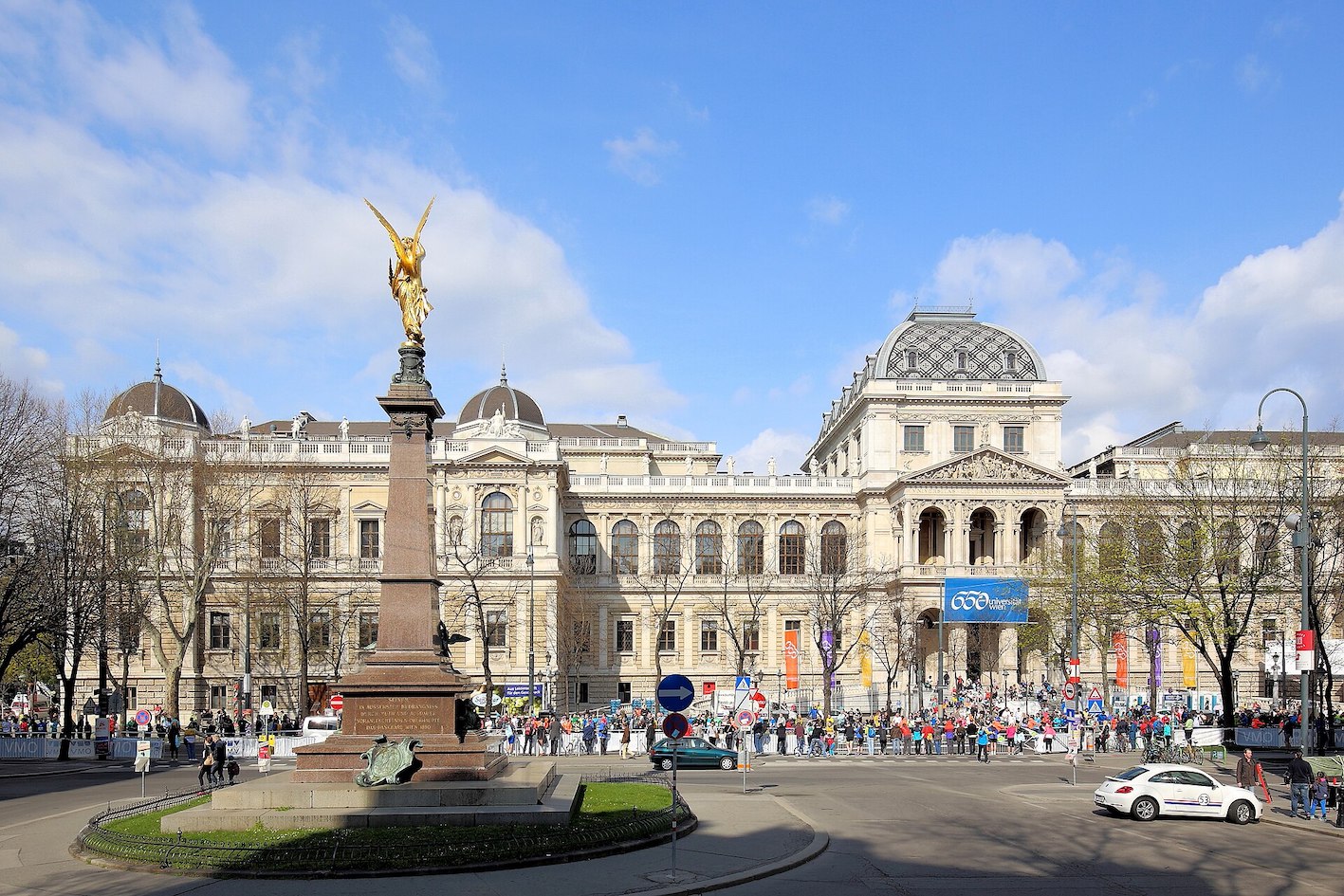 Universität Wien An der Universität Wien studierte Hayek Philosophie, Psychologie und Wirtschaftswissenschaften. Er war zeitlebens der Ansicht, dass ein guter Ökonom an allen Wissensgebieten interessiert sein sollte. In Der Weg zur Knechtschaft schrieb er etwa: Niemand kann ein großer Ökonom sein, der nur Ökonom ist, und ich bin sogar versucht hinzuzufügen, dass der, der ausschließlich Ökonom ist, leicht zum Ärgernis, wenn nicht gar zu einer wirklichen Gefahr wird.[36] Die Universität erlaubte es den Studenten, ihre Fächer frei zu wählen und es gab kaum obligatorische schriftliche Arbeiten oder Tests, außer den Hauptprüfungen am Ende des Studiums.[37] Am Ende seines Studiums interessierte sich Hayek mehr für Wirtschafts- und Rechtswissenschaften. Er plante, Rechtswissenschaft und Ökonomie zu verbinden, um eine Karriere im diplomatischen Dienst zu beginnen. Er promovierte 1921 und 1923 in Rechtswissenschaften und Staatswissenschaften bei seinem Doktorvater Friedrich von Wieser.[38] Für kurze Zeit, als die Universität Wien geschlossen wurde, studierte er am Institut für Gehirnanatomie von Constantin von Monakow, wo Hayek einen Großteil seiner Zeit damit verbrachte, Gehirnzellen zu färben. Hayeks Zeit in Monakows Labor und sein tiefes Interesse an der Arbeit von Ernst Mach inspirierten sein erstes intellektuelles Projekt, das schließlich als The Sensory Order (1952) veröffentlicht wurde. Es lokalisierte das konnektive Lernen auf der physiologischen und neurologischen Ebene und lehnte den Sinnesdaten-Assoziationismus der Empiristen und logischen Positivisten ab.[39][40] Hayek präsentierte seine Arbeit in einem privaten Seminar, das er mit Herbert Furth unter dem Namen Der Geistkreis ins Leben gerufen hatte.[41] Während Hayeks Jahren an der Universität Wien haben ihn vor allem Carl Mengers Arbeit zur Methode der Sozialwissenschaften und Friedrich von Wiesers charismatische Präsenz im Hörsaal nachhaltig beeinflusst.[30] Hayek wurde von Ludwig von Mises auf Empfehlung von Wieser als Spezialist für die österreichische Regierung eingestellt, der an den rechtlichen und wirtschaftlichen Einzelheiten des Vertrags von Saint Germain arbeitete. Zwischen 1923 und 1924 arbeitete Hayek als wissenschaftlicher Mitarbeiter bei Professor Jeremiah Jenks an der New York University und sammelte makroökonomische Daten über die amerikanische Wirtschaft und die Tätigkeit der Federal Reserve.[42] Er wurde von Wesley Clair Mitchell beeinflusst und startete ein Doktorandenprogramm zu Problemen der Währungsstabilisierung, beendete es aber nicht.[43] Seine Zeit in Amerika war nach eigener Aussage nicht besonders glücklich. Er hatte sehr begrenzte soziale Kontakte, vermisste das kulturelle Leben in Wien und war von seiner Armut geplagt.[44] Die finanzielle Situation seiner Familie verschlechterte sich nach dem Krieg erheblich. Hayek, der in seiner Jugend dem fabianischen Sozialismus anhing, begeisterte sich anfänglich für die planwirtschaftlichen Vorstellungen Walther Rathenaus und dessen Konzept des demokratischen Sozialismus. Mit zunehmendem Alter fand er den Marxismus jedoch immer rigider, ideologischer und unattraktiver. Seine sozialistische Phase dauerte nach eigenen Angaben etwa bis zu seinem 23. Lebensjahr.[45] Hayeks ökonomisches Denken verlagerte sich vom Sozialismus hin zum klassischen Liberalismus von Carl Menger und der Österreichischen Schule, nachdem er von Mises’ Buch Die Gemeinwirtschaft gelesen hatte. Einige Zeit nach seiner Lektüre begann Hayek an den privaten Seminaren Mises’ teilzunehmen, wo er bald zum Meisterschüler aufstieg. An Mises’ Privat-Seminar nahmen auch mehrere von Hayeks Universitätsfreunden teil, darunter Fritz Machlup, Alfred Schütz, Felix Kaufmann und Gottfried Haberler, die ebenfalls an Hayeks privatem Seminar Der Geistkreis teilnahmen.[46] In dieser Zeit begegnete er auch dem bekannten politischen Philosophen Eric Voegelin, mit dem er eine langjährige Freundschaft unterhielt.[47] Im August 1926 heiratete Hayek Hélène Berta Marie (Hella) von Fritsch, die als Sekretärin in einer öffentlichen Behörde arbeitete. Das Paar bekam zwei Kinder.[48] Ab 1927 leiteten Mises und Hayek gemeinsam das Österreichische Institut für Konjunkturforschung. Hayek forschte, an Mises anschließend, besonders über die Theorie von Konjunkturschwankungen. |
学生時代 ウィーン大学 ウィーン大学で、ハイエクは哲学、心理学、経済学を学んだ。彼は生涯、優れた経済学者ならあらゆる分野に関心を持つべきだと考えていた。『隷属への道』の中で、彼は次のように書いている。 経済学者だけである者は、優れた経済学者にはなれない。さらに言えば、経済学者だけである者は、迷惑な存在になるだけでなく、実際の危険となる可能性さえあるとさえ言いたい。[36] この大学では、学生は自由に科目を選択でき、卒業時の主要試験以外、必須の筆記試験やテストはほとんどなかった。[37] 卒業間際、ハイエクは経済学と法学により興味を持つようになった。彼は、外交官としてのキャリアを始めるために、法学と経済学を組み合わせることを計画し ていた。1921年と1923年に、彼は指導教官であるフリードリヒ・フォン・ヴィーザーのもとで、法学と政治学の博士号を取得した。[38] ウィーン大学が閉鎖された短期間、彼はコンスタンティン・フォン・モナコウの脳解剖学研究所で学び、その間、ハイエクは脳細胞の染色に多くの時間を費やし た。モナコウの研究室で過ごした時代と、エルンスト・マッハの労働に対する深い関心は、ハイエクの最初の知的プロジェクト、つまり最終的に『感覚の秩序』 (1952年)として出版された著作のインスピレーションとなった。この著作は、生理学的および神経学的レベルでの接続学習を特定し、経験主義者や論理実 証主義者による感覚データ連想主義を否定した。[39][40] ハイエクは、ハーバート・ファースとともに「精神の循環」という名称で立ち上げた非公開のセミナーで、この著作の労働を発表した。[41] ウィーン大学在学中、ハイエクは、カール・メンガーの社会科学の方法論に関する労働と、フリードリヒ・フォン・ヴィーザーの講義でのカリスマ的な存在感に 特に強い影響を受けた。[30] ヴィーザーの推薦により、ハイエクはルートヴィヒ・フォン・ミーゼスによってオーストリア政府の専門家として採用され、サンジェルマン条約の法的および経 済的な詳細について取り組んだ. 1923年から1924年にかけて、ハイエクはニューヨーク大学のジェレミア・ジェンクス教授の研究助手として、アメリカ経済と連邦準備制度の活動に関す るマクロ経済データを収集した。[42] ウェズリー・クレア・ミッチェルの影響を受け、通貨安定化の問題に関する博士課程を開始したが、修了はしなかった。[43] 彼自身、アメリカでの時代は特に幸せではなかったと語っている。社交的な交流はごく限られており、ウィーンの文化的な生活を懐かしく思い、貧困に悩んでい た。[44] 彼の家族の経済状況は、戦後大幅に悪化した。 青年期にファビアン社会主義に傾倒していたハイエクは、当初、ヴァルター・ラテナウの計画経済思想と民主的社会主義の概念に熱狂していた。しかし、年齢を 重ねるにつれて、マルクス主義はますます硬直的で、イデオロギー的であり、魅力のないものになっていった。彼自身によると、彼の社会主義的段階は23歳ま で続いたという。[45] ハイエクの経済思想は、ミゼスの著書『公共経済』を読んだ後、社会主義からカール・メンガーやオーストリア学派の古典的自由主義へと移行した。この本を読 んだしばらくの時代、ハイエクはミゼスの私的なセミナーに参加し始め、すぐにそのトップの生徒となった。ミゼスのプライベートセミナーには、フリッツ・マ クループ、アルフレッド・シュッツ、フェリックス・カウフマン、ゴットフリート・ハーバーラーなど、ハイエクの大学時代の友人たちも参加しており、彼らも ハイエクのプライベートセミナー「Der Geistkreis」に参加していた。[46] この時代、ハイエクは有名な政治哲学者エリック・ヴォーゲリンとも出会い、長年の友情を育んだ。[47] 1926年8月、ハイエクは、公的機関で秘書として労働していたヘレーネ・ベルタ・マリー(ヘラ)・フォン・フリッチュと結婚した。夫妻には2人の子供が生まれた。[48] 1927 年から、ミーゼスとハイエクは共同でオーストリア景気調査研究所を運営した。ハイエクは、ミーゼスに続き、特に景気変動の理論について研究を行った。 |
London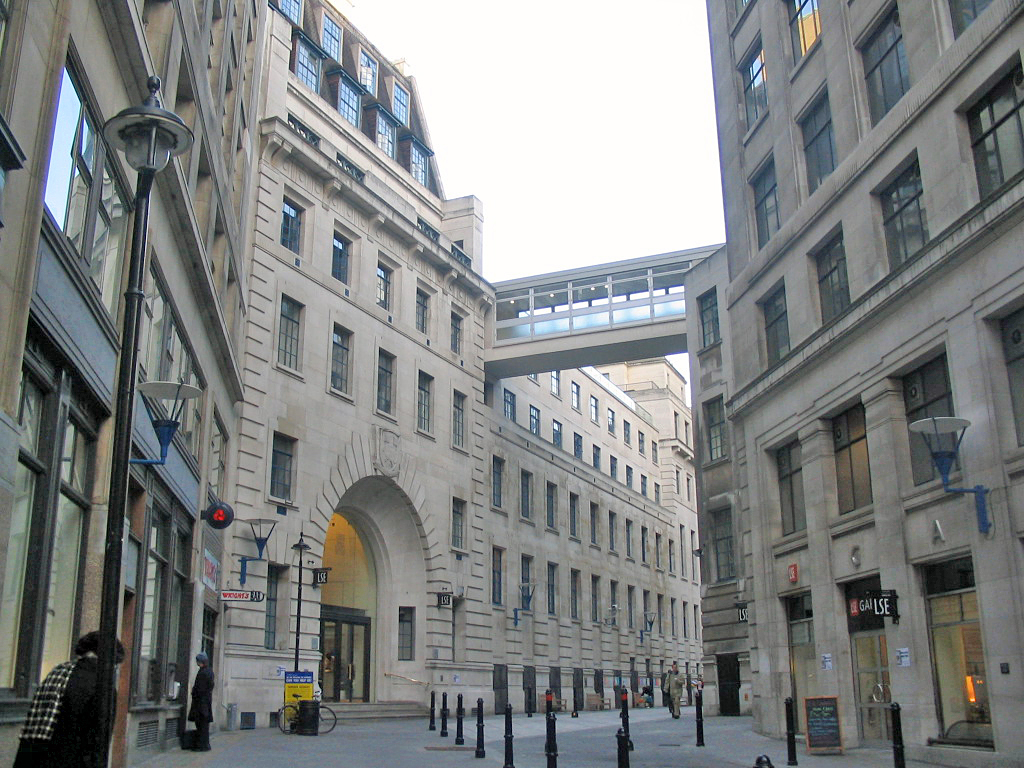 London School of Economics 1931 wurde Hayek von Lionel Robbins an die London School of Economics (LSE) eingeladen. Nach seiner Ankunft in London wurde er schnell als einer der führenden Wirtschaftstheoretiker der Welt anerkannt, und seine Gedanken über die Zeitökonomie von wirtschaftlichen Prozessen und über die Koordinationsfunktion von Preisen inspirierten die bahnbrechenden Arbeiten von John Hicks, Abba P. Lerner, sowie viele andere Entwicklungen der modernen Mikroökonomie. Hayek stand bald im Ruf des wichtigsten intellektuellen Gegenspielers von John Maynard Keynes.[49] 1932 argumentierte Hayek öffentlich, dass private Investitionen ein besserer Weg zu Wohlstand und wirtschaftlicher Koordinierung in Großbritannien seien, als staatliche Ausgabenprogramme. Die Debatte, an der John Maynard Keynes und Lionel Robbins teilnahmen, erschien in The Times.[50] Der Hintergrund dieser Debatte war die damals fast zehn Jahre währende deflationäre Depression in Großbritannien, seit Winston Churchills Entscheidung im Jahr 1925, den Goldstandard wieder einzuführen. Weit über diesen öffentlichen Konflikt hinaus, waren sich Hayek und Keynes in Bezug auf die Ausweitung der Arbeitszeit oder auf die Ökonomie der Arbeit in vielen wesentlichen wissenschaftlichen Fragen nicht einig. Ihre wissenschaftlichen Meinungsverschiedenheiten waren sowohl praktischer als auch grundlegender Natur. Keynes nannte Hayeks Buch Preise und Produktion „eines der schrecklichsten Wirrwarre, die ich je gelesen habe“ und fügte hinzu: „Es ist ein außergewöhnliches Beispiel dafür, wie ein unbarmherziger Logiker, beginnend mit einem Fehler, in Chaos enden kann.“[51] Unter den Ökonomen, die in den 1930er und 1940er Jahren bei Hayek an der LSE studierten, waren Arthur Lewis, Ronald Coase, William Baumol, John Kenneth Galbraith, Leonid Hurwicz, Abba Lerner, Nicholas Kaldor, George Shackle, Thomas Balogh, Arthur Seldon, Paul Rosenstein-Rodan und Oskar Lange.[52][53] Einige unterstützten ihn und andere kritisierten seine Ideen. Er unterrichtete auch viele andere LSE-Studenten, darunter David Rockefeller.[54] Hayek war nicht bereit, nach Österreich zurückzukehren, nachdem der Anschluss es 1938 unter die Kontrolle von Nazi-Deutschland gebracht hatte, und blieb in Großbritannien. Hayek und seine Kinder wurden 1938 britische Staatsbürger.[55][56] Er hatte diesen Status für den Rest seines Lebens inne, hielt sich aber nach 1950 nicht mehr in Großbritannien auf. Er lebte von 1950 bis 1962 in den Vereinigten Staaten und dann hauptsächlich in Deutschland, aber auch kurz in Österreich.[57] Hayek half einigen Wissenschaftlern, die aus NS-Deutschland emigrierten, in Großbritannien ihre akademischen Laufbahnen fortzusetzen,[58] darunter Karl Forchheimer[59] und Richard Schüller.[60] 1947 wurde er zum Fellow der Econometric Society gewählt.[61] Im selben Jahr lud Hayek 36 dem Liberalismus nahestehende Gelehrte zu einem Treffen am Mont Pèlerin in der Schweiz ein, woraus die Mont Pèlerin Society (MPS) hervorging. Hayek war von 1947 bis 1960 Präsident, ab 1960 Ehrenpräsident dieser Organisation. Nach dem Ende des Zweiten Weltkriegs nahm Hayek eine Beziehung zu seiner Cousine auf, hielt sie jedoch bis 1948 geheim. Hayek und Fritsch ließen sich im Juli 1950 scheiden und Friedrich August heiratete seine Cousine Helene Bitterlich, mit der er bis zu seinem Tod verheiratet war. Die Scheidung verursachte einen Skandal an der LSE. Einige Wissenschaftler weigerten sich, weiter mit Hayek zu arbeiten.[62] |
ロンドン ロンドン・スクール・オブ・エコノミクス 1931年、ハイエクはライオネル・ロビンスによってロンドン・スクール・オブ・エコノミクス(LSE)に招かれた。ロンドンに到着後、彼はすぐに世界を 代表する経済理論家の一人として認められ、経済プロセスの時間経済や価格の調整機能に関する彼の考えは、ジョン・ヒックス、アバ・P・ラーナー、そして現 代ミクロ経済学の他の多くの発展に画期的な影響を与えた。ハイエクはすぐに、ジョン・メイナード・ケインズの最も重要な知的対抗者としての評判を得た。 1932年、ハイエクは、英国の繁栄と経済調整には、政府の支出プログラムよりも民間投資の方がより効果的であると公に主張した。ジョン・メイナード・ケ インズとライオネル・ロビンスが参加したこの議論は、タイムズ紙に掲載された。この討論の背景には、1925年にウィンストン・チャーチルが金本位制を復 活させる決定を下して以来、英国で10年近く続いたデフレ不況があった。この公の論争だけでなく、労働時間の延長や労働経済など、多くの重要な学術的問題 について、ハイエクとケインズは意見が一致していなかった。彼らの科学的意見の相違は、実践的かつ根本的なものだった。ケインズは、ハイエクの著書『価格 と生産』を「私が今まで読んだ中で最もひどい混乱の1つ」と呼び、「容赦のない論理学者が、1つの誤りを起点として、いかに混乱に陥るかを示す、非常に優 れた例だ」と付け加えた。[51] 1930年代から1940年代にかけて、LSEでハイエクに師事した経済学者には、アーサー・ルイス、ロナルド・コース、ウィリアム・バウムール、ジョ ン・ケネス・ガルブレイス、レオニード・ハーウィッツ、アバ・ラーナー、ニコラス・カルダー、ジョージ・シャックル、トーマス・バログ、アーサー・セルド ン、ポール・ローゼンスタイン・ロダン、オスカー・ランゲなどがいた。[52][53] 彼を支持する者もいれば、彼の考えを批判する者もいた。彼は、デビッド・ロックフェラーなど、LSE の他の多くの学生にも教えた。 ハイエクは、1938年にナチス・ドイツによる併合でオーストリアが支配下に入った後、オーストリアに戻ることを望まず、英国に留まった。ハイエクとその 子供たちは、1938年に英国国籍を取得した。[55][56] 彼は生涯この国籍を保持したが、1950 年以降は英国に滞在することはなかった。1950 年から 1962 年までは米国、その後主にドイツ、そして短期間オーストリアにも住んだ。[57] ハイエクは、ナチス・ドイツから亡命した何人かの科学者が英国で学術的キャリアを継続できるよう支援した[58]。その中には、カール・フォルクハイマー[59]やリヒャルト・シュラー[60]も含まれている。 1947年、彼は計量経済学会のフェローに選出された[61]。 同年、ハイエクは、自由主義に親しい36人の学者をスイスのモン・ペレランに招いて会合を開き、それがモン・ペレラン協会(MPS)の始まりとなった。ハイエクは1947年から1960年まで会長、1960年からは名誉会長を務めた。 第二次世界大戦の終結後、ハイエクは従姉妹と交際を始めたが、1948年までそのことを秘密にしていた。ハイエクとフリッチュは1950年7月に離婚し、 フリードリヒ・アウグストは従姉妹のヘレーネ・ビターリッヒと結婚し、その妻は彼の死まで連れ添った。この離婚は LSE でスキャンダルを引き起こした。一部の科学者は、ハイエクとの協力を拒否した。 |
Chicago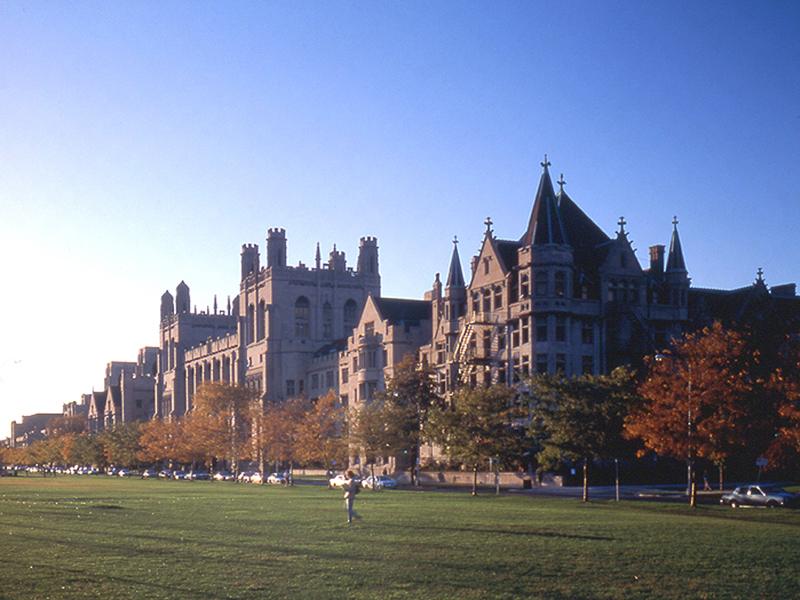 University of Chicago 1950 verließ Hayek die London School of Economics. Nachdem er das akademische Jahr 1949–1950 als Gastprofessor an der University of Arkansas verbracht hatte, wurde er von der University of Chicago angestellt, wo er Professor im Komitee für soziales Denken wurde. Hayeks Gehalt wurde nicht von der Universität finanziert, sondern von einer externen Stiftung, dem William Volker Fund. Hayek hatte in den 1940er Jahren mit vielen Kollegen von der Universität von Chicago Kontakt aufgenommen, wo sein Der Weg zur Knechtschaft einen entscheidenden Einfluss auf das ökonomische und politische Denken von Milton Friedman und anderen fand.[63] Hayek führte an der Universität von Chicago eine Reihe wichtiger Fakultätsseminare durch, und eine Reihe von Wissenschaftlern arbeitete an Forschungsprojekten, die mit Hayeks eigenen Projekten sympathisierten, wie beispielsweise Aaron Director, der an der Chicago School aktiv war. Ihm gelang es später das einflussreiche „Law and Society“ -Programm an der University of Chicago Law School zu etablieren.[64] Hayek und Friedman arbeiteten gemeinsam bei der Intercollegiate Society of Individualists zusammen, die später in das Intercollegiate Studies Institute umbenannt wurde, eine amerikanische Studentenorganisation, die sich libertären Ideen widmet.[65][66] Obwohl sie die meisten politischen Überzeugungen teilten und sich lediglich in geldpolitischen Fragen uneinig waren, arbeiteten Hayek und Friedman in getrennten Universitätsabteilungen mit unterschiedlichen Forschungsinteressen und entwickelten nie eine enge Arbeitsbeziehung.[67] Trotz ihrer gelegentlichen sozialen Interaktion standen sie sich nicht persönlich nahe. Alan O. Ebenstein, der Biografien sowohl von Friedman als auch von Hayek schrieb, vermutete eine engere Freundschaft mit Keynes als mit Friedman.[68] Hayeks erstes Seminar in Chicago war über Wissenschaftsphilosophie, an dem viele der bedeutendsten Wissenschaftler der Universität von Chicago teilnahmen, darunter Enrico Fermi, Sewall Wright und Leó Szilárd. Während seiner Zeit in Chicago beschäftigte er sich mit Wissenschafts-, Wirtschafts-, Politik- und Ideengeschichte. Hayek erhielt 1954 ein Guggenheim-Stipendium.[69] Nachdem er ein Buch über John Stuart Mills Briefe herausgegeben hatte, plante er, zwei Bücher über die liberale Ordnung zu veröffentlichen: Die Verfassung der Freiheit und „Die schöpferischen Kräfte einer freien Zivilisation“ (schließlich der Titel für das zweite Kapitel der Verfassung der Freiheit).[70] Er vollendete die Verfassung der Freiheit im Mai 1959 und die Veröffentlichung folgte im Februar 1960. Hayek war enttäuscht, dass das Buch nicht die gleiche begeisterte Rezeption erhielt, wie Der Weg zur Knechtschaft 16 Jahre früher.[71] Er verließ Chicago hauptsächlich aus finanziellen Gründen, weil er sich Sorgen um seine Altersvorsorge machte. Seine Haupteinnahmequelle war sein Gehalt, neben Tantiemen aus Buchveröffentlichungen, jedoch verzichtete er auf das Schreiben von Lehrbüchern.[72] Er gab sehr viel Geld auf seinen häufigen Reisen aus.[72] Er verbrachte regelmäßig den Sommer in den österreichischen Alpen, wo er gewöhnlich im Tiroler Dorf Obergurgl wohnte und in den Bergen wanderte. Er besuchte Japan viermal und unternahm Reisen nach Tahiti, Fidschi, Indonesien, Australien, Neukaledonien und Sri Lanka.[73] Die Scheidung von seiner Frau führte zu einer erheblichen finanziellen Belastung, und, wie er erwähnte, verlor er durch einen finanziellen Betrug eine große Summe Geld.[74] |
シカゴ シカゴ大学 1950年、ハイエクはロンドン・スクール・オブ・エコノミクスを去った。1949年から1950年の学年度をアーカンソー大学の客員教授として過ごした 後、シカゴ大学に採用され、社会思想委員会の教授に就任した。ハイエクの給与は大学からではなく、外部財団であるウィリアム・フォルカー基金から支払われ た。 1940年代、ハイエクはシカゴ大学の多くの同僚と連絡を取り合っており、彼の著書『隷属への道』は、ミルトン・フリードマンらによる経済・政治思想に決 定的な影響を与えた。[63] ヘイエクはシカゴ大学で一連の重要な学部セミナーを開催し、アーロン・ディレクターなど、ヘイエク自身のプロジェクトに共感する研究者が、シカゴ学派で活 動しながら、一連の研究プロジェクトに取り組んだ。ディレクターは後に、シカゴ大学ロースクールで影響力のある「法と社会」プログラムを設立することに成 功した。[64] ハイエクとフリードマンは、後にリバタリアン思想を専門とするアメリカの学生団体「Intercollegiate Studies Institute」と改名された「Intercollegiate Society of Individualists」で共に活動した。[65][66] ほとんどの政治的信念を共有し、金融政策の問題についてのみ意見が分かれていたにもかかわらず、ハイエクとフリードマンは、異なる研究分野を持つ別々の大 学部門で働き、緊密な協力関係を築くことはなかった。[67] 時折社交的な交流はあったものの、彼らは個人的に親しい関係にはなかった。フリードマンとハイエクの両方の伝記を執筆したアラン・O・エベンスタインは、 フリードマンよりもケインズとの友情の方が深かったのではないかと推測している。[68] ハイエクがシカゴで初めて開講したセミナーは科学哲学に関するもので、エンリコ・フェルミ、セウォール・ライト、レオ・シラードなど、シカゴ大学の多くの 著名な科学者が参加した。シカゴ滞在中は、科学、経済、政治、思想の歴史を研究した。ハイエクは 1954 年にグッゲンハイム奨学金を受けた。[69] ジョン・スチュアート・ミルの書簡集を編集した後、彼は自由主義の秩序に関する 2 冊の本、すなわち『自由の憲法』と『自由な文明の創造力』(最終的には『自由の憲法』の第 2 章のタイトルとなった)を出版する計画を立てた。[70] 彼は 1959 年 5 月に『自由の憲法』を完成させ、1960 年 2 月に出版した。ヘイエクは、この本が 16 年前に出版された『隷属への道』ほど熱狂的な評価を受けなかったことに失望した。[71] 彼は、主に経済的な理由から、老後の生活資金について不安を抱き、シカゴを離れた。彼の主な収入源は、書籍の印税に加えて、給与であったが、彼は教科書の 執筆は控えていた。[72] 彼は頻繁な旅行に多額の費用をかけた。[72] 彼は定期的にオーストリアのアルプスで夏を過ごし、通常はチロルの村オーバーグルグルに滞在し、山でハイキングを楽しんだ。彼は4回日本を訪れ、タヒチ、 フィジー、インドネシア、オーストラリア、ニューカレドニア、スリランカにも旅行した。[73] 妻との離婚は、彼に多大な経済的負担をもたらし、また、彼が述べたように、金融詐欺によって多額の金銭を失った。[74] |
Freiburg und Salzburg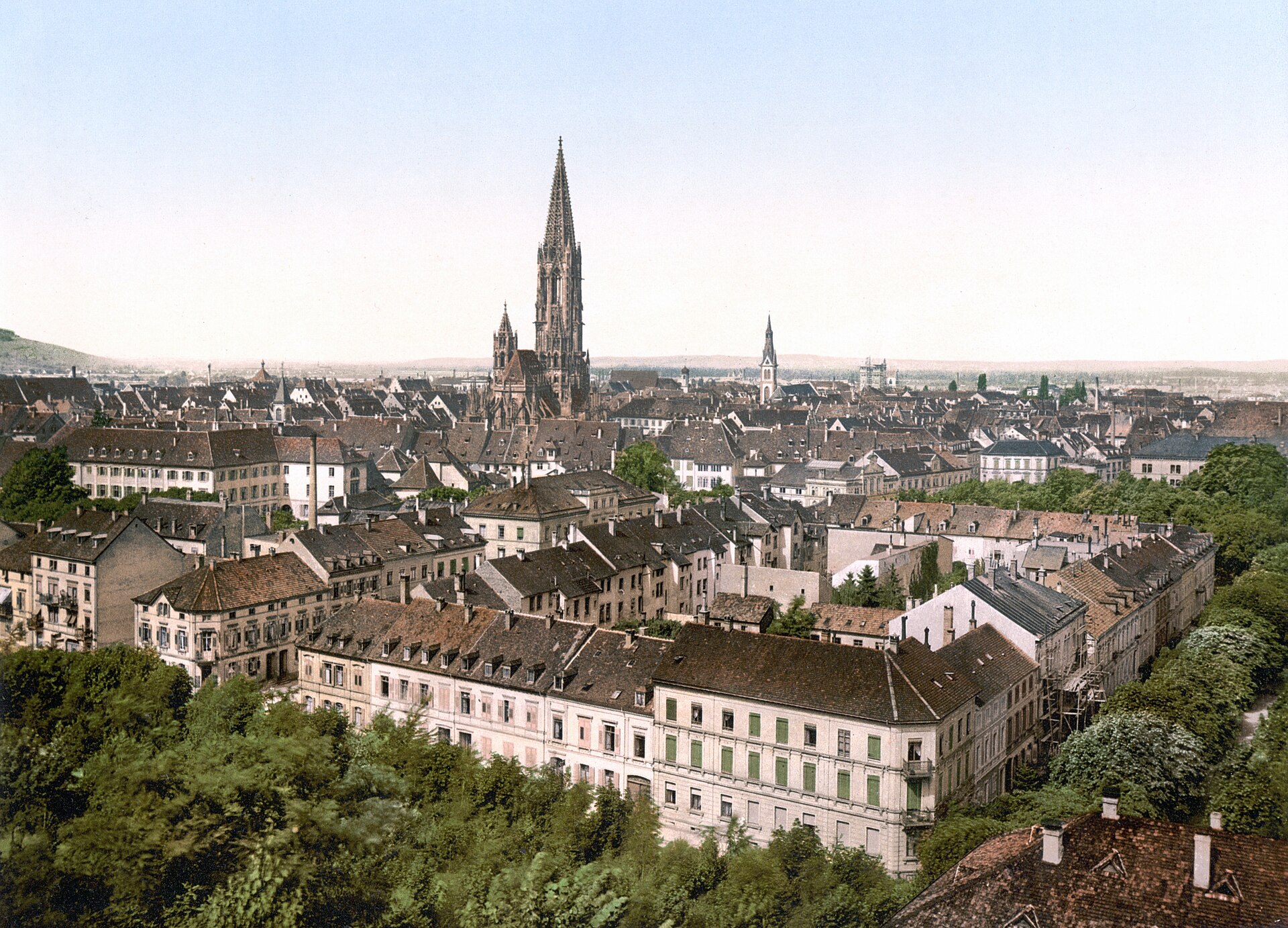 Freiburg im Breisgau Von 1962 bis zu seiner Pensionierung 1968 war er Professor an der Universität Freiburg, wo er mit der Arbeit an seinem nächsten Buch, Recht, Gesetzgebung und Freiheit, begann. Kurz darauf wurde er Vorstandsmitglied des Walter Eucken Instituts (Freiburger Schule). Von 1965 bis 1970 war er Mitglied des Beirats der Friedrich-Naumann-Stiftung. Hayek betrachtete seine Jahre in Freiburg als „sehr produktiv“.[73] Nach seiner Pensionierung verbrachte Hayek ein Jahr als Gastprofessor für Philosophie an der University of California in Los Angeles, wo er seine Arbeit zu Recht, Gesetzgebung und Freiheit fortsetzte und ein gleichnamiges Graduiertenseminar und ein weiteres Seminar zur Philosophie der Sozialwissenschaften anbot.[73] Die vorläufigen Entwürfe des Buches wurden 1970 fertiggestellt, aber Hayek entschied sich, seine Entwürfe zu überarbeiten, und brachte das Buch schließlich 1973, 1976 und 1979 in drei Bänden zur Veröffentlichung. 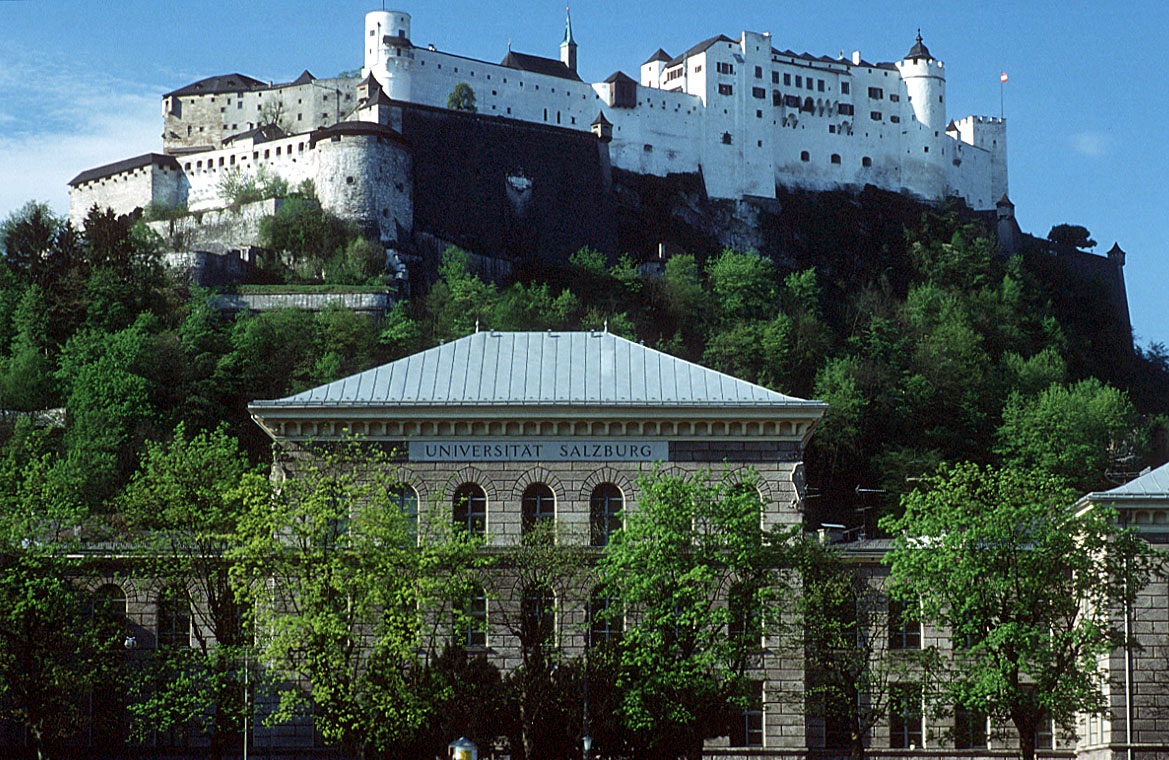 Universität Salzburg Hayek wurde von 1969 bis 1977 Professor an der Universität Salzburg und kehrte dann nach Freiburg zurück, wo er den Rest seiner Tage verbrachte. Als Hayek 1977 Salzburg verließ, schrieb er: „Ich habe einen Fehler mit meinem Umzug nach Salzburg gemacht“. Die Wirtschaftsabteilung war zu klein und die Bibliothekseinrichtungen unzureichend.[75] Hayek litt ab 1969 an schlechter Gesundheit und einer schweren Depression, bei der sich eine gewisse Besserung nach 1974 einstellte. Er hatte zwei Herzinfarkte (einer davon bereits 1960), die erst im Nachhinein entdeckt und später falsch diagnostiziert wurden. Er nahm auch Medikamente gegen Depressionen. Sein Gehör nahm ab, was sein soziales Leben beeinträchtigte und ihn zwang, seine Theaterfreude aufzugeben. Seine Arbeit litt auch, er verbrachte Jahre damit, keine anspruchsvollen Arbeiten zu publizieren, und gelegentlich fühlte er sich so unwohl, dass er nicht aufstehen konnte. In Momenten, in denen er sich besser fühlte, arbeitete er weiter an Recht, Gesetzgebung und Freiheit.[76] |
フライブルクとザルツブルク フライブルク・イム・ブライスガウ 1962年から1968年に退職するまで、彼はフライブルク大学の教授を務め、次の著書『権利、立法、自由』の執筆を始めた。その直後、彼はヴァルター・ オイケン研究所(フライブルク学派)の理事に就任した。1965年から1970年まで、彼はフリードリヒ・ナウマン財団の諮問委員を務めた。ハイエクは、 フライブルクでの年月を「非常に生産的な」ものと捉えていた[73]。退職後、ハイエクはカリフォルニア大学ロサンゼルス校で哲学の客員教授として 1 年間過ごし、そこで『権利、立法、自由』の執筆を続け、同名の大学院セミナーと、社会科学の哲学に関する別のセミナーを開講した。[73] この本の草稿は1970年に完成したが、ハイエクは草稿を改訂することを決め、1973年、1976年、1979年に3巻で出版した。  ザルツブルク大学 ハイエクは 1969 年から 1977 年までザルツブルク大学の教授を務めた後、フライブルクに戻り、そこで余生を過ごした。1977 年にザルツブルクを離れる際、ハイエクは「ザルツブルクへの引っ越しは間違いだった」と記している。経済学部は規模が小さすぎ、図書館の設備も不十分だっ たのだ。[75] 1969 年以降、ハイエクは健康状態が悪化し、重度のうつ病に悩まされたが、1974 年以降、多少の改善が見られた。彼は 2 回(1 回目は 1960 年)心臓発作を起こしたが、それは後になって発見され、後に誤診された。また、うつ病の治療薬も服用していた。聴力が低下し、社交生活に支障をきたし、演 劇を楽しむことを断念せざるを得なかった。仕事にも影響が出、何年も難解な著作を出版することができず、時には体調が悪くて起き上がることさえできないこ ともあった。体調が良好な時には、法、立法、自由に関する研究を続けた。[76] |
Alfred-Nobel-Gedächtnispreis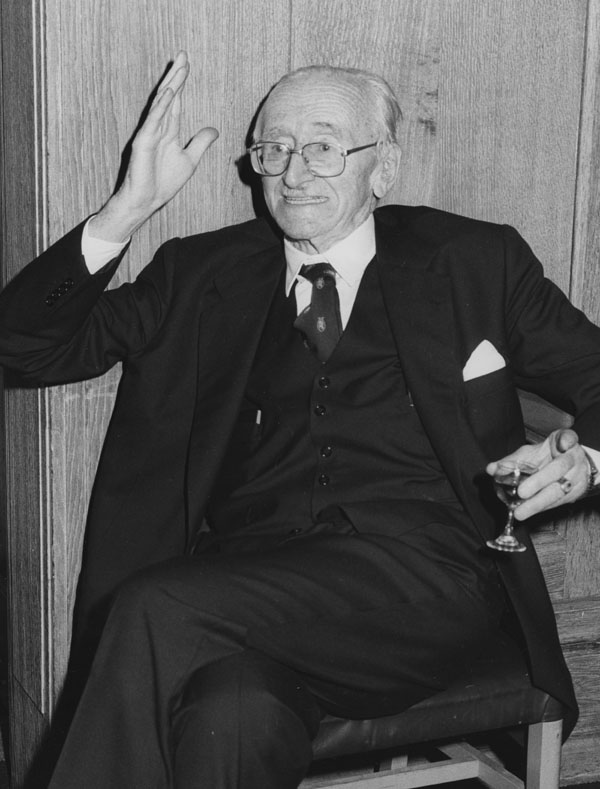 Hayek 1981 Am 9. Oktober 1974 wurde bekannt gegeben, dass Hayek zusammen mit dem schwedischen Ökonomen Gunnar Myrdal den Alfred-Nobel-Gedächtnispreis für Wirtschaftswissenschaften erhalten würde. Die Auszeichnung erfolgte „für ihre Pionierarbeit auf dem Gebiet der Geld- und Konjunkturtheorie und ihre tiefgründige Analyse des Zusammenhangs von wirtschaftlichen, gesellschaftlichen und institutionellen Erscheinungen“.[77] Hayek war überrascht über die Auszeichnung und glaubte, dass er sie zusammen mit Myrdal erhalten hatte, damit das Komitee zwei Personen mit gegensätzlichen politischen Ansichten auszeichnen könne.[78] Der Alfred-Nobel-Gedächtnispreis für Wirtschaftswissenschaften wurde erst 1968 ins Leben gerufen und Hayek war der erste nicht-keynesianische, liberale Wirtschaftswissenschaftler, der ihn gewann. Während der Nobelverleihung im Dezember 1974 traf Hayek den russischen Dissidenten Alexander Solschenizyn. Hayek schickte ihm später eine russische Übersetzung von Der Weg zur Knechtschaft.[78] Bei seiner Preisverleihung zeigte er sich besorgt über die Gefahr, die die Autorität des Preises für einen Ökonomen bedeuten würde.[79] Der Preis brachte ein viel größeres öffentliches Bewusstsein für die damals kontroversen Ideen von Hayek und wurde von seinem Biographen als größtes verjüngendes Ereignis in seinem Leben bezeichnet.[80] |
アルフレッド・ノーベル記念賞 ハイエク 1981 1974年10月9日、ハイエクはスウェーデンの経済学者グンナー・ミルダルとともに、アルフレッド・ノーベル記念経済学賞を受賞することが発表された。 この賞は、「金融および景気理論の分野における先駆的な研究、ならびに経済、社会、制度上の現象の関連性に関する深い分析」に対して授与された[77]。 ハイエクは、この受賞に驚き、委員会が政治的見解が対立する 2 人に賞を授与するために、ミードルと共同で受賞したと考えた。[78] アルフレッド・ノーベル記念経済学賞は 1968 年に創設されたばかりで、ハイエクは、この賞を非ケインズ派のリベラルな経済学者として初めて受賞した人物だった。 1974年12月のノーベル賞授賞式で、ハイエクはロシアの反体制派、アレクサンドル・ソルジェニーツィンと出会った。ハイエクは後に、ソルジェニーツィ ンに『隷属への道』のロシア語訳を送った。[78] 授賞式で、彼はこの賞が経済学者にとって持つ権威の危険性について懸念を示した。[79] この賞は、当時物議を醸していたハイエクの考えを広く世間に知らしめ、彼の伝記作家は、この賞を彼の人生における最大の若返りイベントと評している。 [80] |
Britische Politik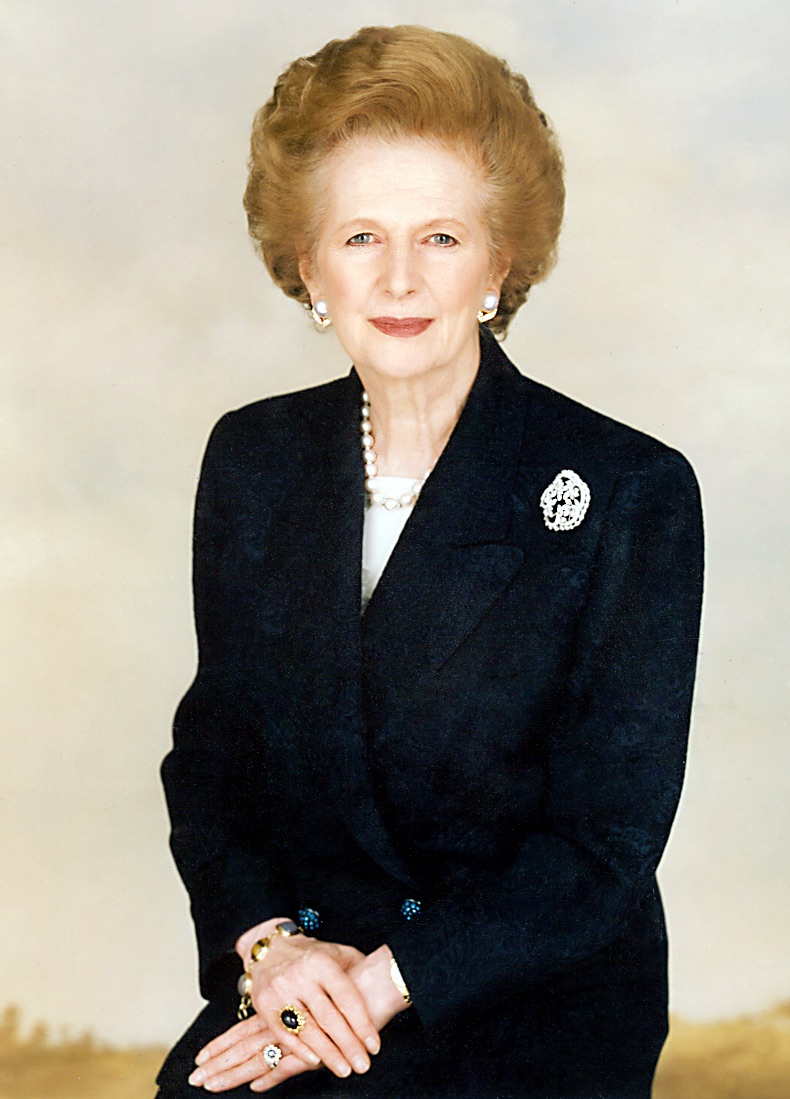 Margaret Thatcher Im Februar 1975 wurde Margaret Thatcher zur Vorsitzenden der British Conservative Party gewählt. Das Institute of Economic Affairs arrangierte kurz darauf ein Treffen zwischen Hayek und Thatcher in London.[81] Während Thatchers einzigem Besuch im Conservative Research Department im Sommer 1975 hatte ein Redner einen Artikel vorbereitet, warum der „mittlere Weg“ der pragmatische Weg war, den die konservative Partei einschlagen sollte, um die Extreme von links und rechts zu vermeiden. Bevor er fertig war, griff Thatcher in ihre Aktentasche und holte ein Buch heraus: Es war Hayeks Die Verfassung der Freiheit. Sie unterbrach den Vortragenden und hielt das Buch hoch, damit alle es sehen konnten. „Das“, sagte sie streng, „ist woran wir glauben.“ und schlug Hayeks Buch auf den Tisch.[82] Trotz seiner medialen Darstellung als Thatchers Guru und Macht hinter dem Thron war die Kommunikation zwischen Hayek und der Premierministerin nicht sehr regelmäßig – sie sahen sich nur ein- oder zweimal im Jahr.[83] Neben Thatcher hatte Hayek bedeutenden Einfluss auf die Politiker Enoch Powell, Keith Joseph, Nigel Lawson, Geoffrey Howe und John Biffen.[84] Hayek wurde 1978 kontrovers diskutiert, als er Thatchers restriktiven Vorschlag zur Einwanderungspolitik in einem Artikel lobte, der ihm zahlreiche Vorwürfe des Antisemitismus und Rassismus einbrachte, weil er über die Unfähigkeit der Assimilation osteuropäischer Juden im Wien seiner Jugend reflektierte.[84] Er verteidigte sich, indem er erklärte, dass er keine rassistischen Urteile fällte, sondern nur die Probleme der Akkulturation hervorhob.[85] Hayek unterstützte Großbritannien im Falklandkrieg und schrieb, dass es gerechtfertigt sei, argentinisches Territorium anzugreifen, anstatt nur die Inseln zu verteidigen. Dies brachte ihm in Argentinien, einem Land, das er auch mehrmals besuchte, viel Kritik ein. Er war auch unzufrieden mit der schwachen Reaktion der Vereinigten Staaten auf die Geiselnahme von Teheran und forderte, dass ein Ultimatum gestellt und der Iran notfalls bombardiert werden sollte. Er unterstützte Ronald Reagans Entscheidung, hohe Verteidigungsausgaben beizubehalten und glaubte, dass ein starkes US-Militär eine Garantie für den Weltfrieden sei und notwendig, um die Sowjetunion unter Kontrolle zu halten.[86] Präsident Reagan nannte Hayek als einen der zwei oder drei Personen, die sein Denken am meisten beeinflusst hätten, und begrüßte ihn einige Male als besonderen Gast im Weißen Haus.[87] |
英国の政治 マーガレット・サッチャー 1975年2月、マーガレット・サッチャーは英国保守党の党首に選出された。その直後、経済問題研究所はロンドンでハイエクとサッチャーの会談を手配し た。[81] 1975年夏、サッチャーが保守党調査部を唯一訪問した際、ある講演者が、保守党が左右両極端を回避するために取るべき現実的な道筋は「中道」であるとす る論文を用意していた。その講演が終わる前に、サッチャーはブリーフケースから1冊の本を取り出した。それはハイエクの『自由の憲法』だった。彼女は講演 者を中断し、その本を皆に見えるように高く掲げた。「これが、我々の信じるもの」と彼女は厳しく言い、ハイエクの本をテーブルに叩きつけた。[82] メディアではサッチャーの師匠であり、影の権力者であると報じられていたが、ハイエクと首相のコミュニケーションはそれほど頻繁ではなく、彼らは年に1、 2回しか会わなかった[83]。サッチャー以外にも、ハイエクはエノック・パウエル、キース・ジョセフ、ナイジェル・ローソン、ジェフリー・ハウ、ジョ ン・ビッフェンといった政治家たちに大きな影響を与えた[84]。 1978年、ハイエクは、サッチャーの移民政策に関する制限的な提案を称賛する記事を発表し、反ユダヤ主義や人種差別主義者であると多くの非難を受けた。 この記事の中で、彼は、若い頃ウィーンで、東ヨーロッパのユダヤ人が同化できないことを考察していたからだ。[84] 彼は、人種差別的な判断を下したのではなく、文化の同化の問題を指摘しただけだと説明して、自分を守った。[85] ハイエクは、フォークランド紛争で英国を支持し、島々を守るだけでなく、アルゼンチンの領土を攻撃することは正当であると書いた。この発言は、彼が何度か 訪問したアルゼンチンで、多くの批判を招いた。また、テヘラン人質事件に対する米国の対応が弱腰であることに不満を持ち、最後通告を行い、必要であればイ ランを爆撃すべきだと主張した。ロナルド・レーガン大統領が防衛費の高水準維持を決定したことを支持し、強力な米軍は世界平和の保証であり、ソ連を抑制す るために必要であると信じていた。[86] レーガン大統領は、ヘイエクを自分の考えに最も影響を与えた 2、3 人の人物の一人として挙げ、何度かホワイトハウスに特別ゲストとして迎えた。[87] |
Späteres Leben und Tod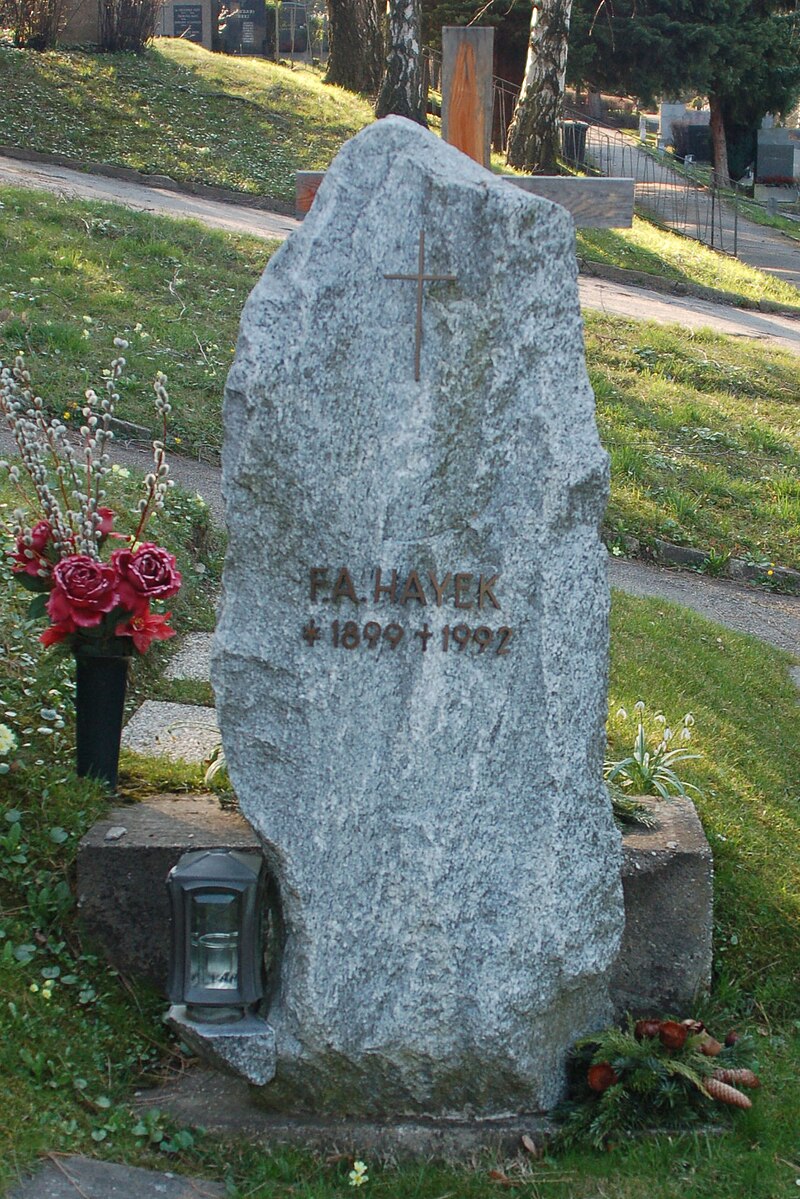 Grab Hayeks in Wien Nach seiner Scheidung besuchte Hayek seine Kinder selten, war jedoch nach seinem Umzug nach Freiburg wieder regelmäßiger in Kontakt mit ihnen.[88] Hayeks Sohn Laurence Hayek (1934–2004) war ein bekannter Mikrobiologe.[89] Seine Tochter Christine war Entomologin am British Museum of Natural History und kümmerte sich in seinen letzten Jahren nachlassender Gesundheit um ihn.[90] In den Jahren 1977 und 1981 besuchte er Chile, wo er unter anderem mit dem Diktator Augusto Pinochet persönlich sprach, dessen Regime er daraufhin in verschiedenen Artikeln zu verteidigen suchte – wider besseres Wissen ohne Hinweis auf die unter Pinochet verübten Menschenrechtsverbrechen.[91] 1991 wurde ihm die Presidential Medal of Freedom, die höchste zivile Auszeichnung der USA, verliehen. Hayek hatte ein lebenslanges Interesse an Biologie und befasste sich auch mit Ökologie und Umweltschutz. Nachdem er den Alfred-Nobel-Gedächtnispreis erhalten hatte, bot er seinen Namen an, um den World Wildlife Fund, die National Audubon Society und den National Trust zu unterstützen.[92] Hayek starb 1992 in Freiburg. Begraben ist er in Wien auf dem Neustifter Friedhof (Gruppe 1, Reihe 17, Nummer 11).[90][93] |
晩年と死 ウィーンにあるハイエクの墓 離婚後、ハイエクは子供たちに会うことはほとんどなかったが、フライブルクに移住してからは、より頻繁に子供たちと連絡を取り合うようになった[88]。 ハイエクの息子、ローレンス・ハイエク(1934年~2004年)は、有名な微生物学者だった[89]。娘のクリスティーンは、大英自然史博物館の昆虫学 者であり、ハイエクの健康状態が悪化した晩年、彼の世話をした。[90] 1977 年と 1981 年にチリを訪れ、独裁者アウグスト・ピノチェトと直接会談した。その後、ピノチェト政権を擁護する記事をいくつか執筆したが、ピノチェト政権下で人権侵害 が行われていることを知っていたにもかかわらず、その事実については一切言及しなかった。[91] 1991年には、米国最高の民間人への栄誉である大統領自由勲章を授与された。 ハイエクは生涯、生物学に関心を持ち、生態学や環境保護にも取り組んだ。アルフレッド・ノーベル記念賞を受賞した後、世界自然保護基金、全米オーデュボン協会、ナショナル・トラストを支援するために自分の名前を提供した。[92] ハイエクは1992年にフライブルクで死去した。ウィーンのノイシュティフター墓地(グループ1、列17、番号11)に埋葬されている。[90][93] |
| Werk Konjunkturtheorie Siehe auch: Überinvestitionstheorie Hayeks makroökonomische Forschung betraf Kapital, Geld und den Konjunkturzyklus. Hayeks Lehrer Ludwig von Mises hatte in seiner Theorie des Geldes und der Umlaufsmittel (1924) das Konzept des Grenznutzens auf den Wert des Geldes angewendet.[94] Dort schlug Mises auch eine Erklärung für „konjunkturelle Schwankungen“ vor, die auf den Ideen der alten British Currency School und dem schwedischen Ökonomen Knut Wicksell basierten.[95] Hayek nutzte dieses Werk als Ausgangspunkt für seine eigene Interpretation des Konjunkturzyklus und erarbeitete die später als österreichische Konjunkturtheorie bekannte Darstellung. In Preise und Produktion (1931) argumentierte Hayek, dass der Konjunkturzyklus aus der inflationären Kreditausweitung der Zentralbank und ihrer Übertragung im Zeitverlauf resultiere, was zu einer Fehlallokation von Kapital aufgrund der künstlich niedrigen Zinssätze führe.[96] Hayek behauptete, dass die Instabilität der Marktwirtschaft in der Vergangenheit die Folge der staatlichen Unterdrückung des Marktmechanismus sei.[7] 1929 wurde Lionel Robbins Leiter der London School of Economics (LSE). Robbins war bestrebt, ökonomische Alternativen zur einflussreichen Cambridge School zu fördern. Er lud Hayek ein, und dieser arbeitete ab 1931 an der Fakultät an der LSE. Laut Nicholas Kaldor „faszinierte Hayeks Theorie der Zeitstruktur des Kapitals und des Konjunkturzyklus zunächst die akademische Welt“ und schien ein weniger „einfaches und oberflächliches“ Verständnis anzubieten als die Makroökonomie der Cambridge School.[97] 1931 kritisierte Hayek John Maynard Keynes’ Abhandlung über Geld (1930) in seinen Reflexionen über die reine Theorie von Herrn J. M. Keynes und veröffentlichte seine Vorlesungen an der LSE in Buchform als Preise und Produktion.[98] Für Keynes sind Arbeitslosigkeit und ungenutzte Ressourcen auf einen Mangel an aggregierter Nachfrage zurückzuführen, für Hayek jedoch auf eine frühere nicht nachhaltige Episode von billigem Geld und künstlich niedrigen Zinssätzen. Hayeks Analyse basierte auf Eugen Böhm von Bawerks Konzept der „durchschnittlichen Produktionsdauer“ und auf den Auswirkungen, die die Geldpolitik auf sie haben könnte.[99] In Übereinstimmung mit den Überlegungen, die später in seinem Aufsatz The Use of Knowledge in Society (1945) dargelegt wurden, argumentierte Hayek, dass eine monopolistische Regierungsbehörde wie eine Zentralbank weder über die relevanten Informationen verfügen könne, um die Geldmenge zu steuern, noch über die Fähigkeit verfüge, die Informationen richtig einzusetzen.[18] Hayek baute dabei die Konjunkturtheorie Ludwig von Mises’ weiter aus.[100] Hayeks Analyse basiert dabei grundsätzlich auf der traditionellen Gleichgewichtstheorie. Einfluss übte dabei auch die Theorie Knut Wicksells aus; demnach beruhen Ungleichgewichtsprozesse auf dem Auseinanderklaffen von natürlichem Zinssatz und dem von den Banken festgelegten Zins (die Kreditzinsen weichen von dem Niveau ab, das sich auf unbeeinflussten Kapitalmärkten eingestellt hätte). Grundlegend für von Hayeks Konjunkturtheorie sind folgende Überlegungen: Durch freiwilliges Sparen verringert sich die Nachfrage nach Konsumgütern. Der relative Preis der Konsumgüter sinkt. Die Kapitalbildungsquote steigt, wodurch der Geldzins sinkt. Sinken die Kapitalkosten, so wird die Investition in ergiebigere Produktionsmittel lohnender (Ricardo-Effekt).[101] Solange dies auf freiwilligem Sparen basiert, strebt die Wirtschaft einem Gleichgewicht entgegen.[102] Sinkt durch Kreditexpansion der Geldzins unter den natürlichen Zinssatz, steigen die Investitionen in Produktionsmittel. Der verringerten Konsumgüterproduktion steht eine gleichbleibende Nachfrage entgegen. Der Konsumgüterverzicht führt zu „erzwungenem Sparen“, das den von den Investoren beanspruchten Ressourcen entspricht. Mit der dadurch verursachten Preissteigerung erreicht das Wirtschaftshoch einen kritischen Punkt: Die Konsumgüterpreise steigen bei nunmehr steigendem Zins. Die einzigen Lösungen sind für von Hayek die weitere Kreditexpansion, um die Abnahme der Kapitalgüternachfrage zu vermeiden, oder der schmerzhafte, aber dauerhaft unvermeidbare Prozess der Rezession. In der Rezession gleicht sich das intersektorale Ungleichgewicht der tatsächlichen Nachfragestruktur wieder an (monetäre Überinvestitionstheorie). Im Unterschied zum Monetarismus sieht von Hayek die Ursache für die Entstehung von Rezessionen im Zusammenspiel der monetären Phänomene und der realen Produktionsstruktur. Durch die Weltwirtschaftskrise sah von Hayek seine Arbeiten bestätigt.[102] Nach Hayek sind Konjunkturzyklen die Folge von Abweichungen des Geldzinssatzes vom „natürlichen Zinssatz“, das heißt dem Zinssatz, bei dem Ersparnis und Investition sich ausgleichen. Es bildet sich eine Differenz zwischen beiden Größen, die durch zusätzliche Liquidität gedeckt werden muss. Diese ermöglicht es den Unternehmen, Projekte zu finanzieren, die zuvor nicht rentabel gewesen wären. Die Wirtschaftsleistung weitet sich dadurch stärker aus, als es im natürlichen Fall möglich gewesen wäre. Die zusätzliche Liquidität führt jedoch nach einiger Zeit zu steigenden Preisen. Passen sich die Wirtschaftssubjekte daran an, steigen die Zinsen. Investitionsprojekte, die sich zum bisherigen Geldzinssatz ausgezahlt hätten, müssen abgebrochen werden. Es kommt zum Crash.[103] Keynes bat seinen Freund Piero Sraffa, auf Hayek zu antworten. Sraffa ging auf die Auswirkungen inflationsbedingter „erzwungener Ersparnisse“ auf den Kapitalsektor und auf die Definition eines „natürlichen“ Zinssatzes in einer wachsenden Wirtschaft ein (Sraffa-Hayek-Debatte).[104] Andere, die kritisch auf Hayeks Arbeiten zum Konjunkturzyklus reagierten, waren John Hicks, Frank Knight, Gunnar Myrdal und Milton Friedman.[105][106] Nicholas Kaldor schrieb später, dass Hayeks Preise und Produktion „eine bemerkenswerte Anzahl von Kritikern“ hervorgebracht hätte und dass die Gesamtzahl der Seiten in britischen und amerikanischen Fachzeitschriften, die der daraus resultierenden Debatte gewidmet waren, „in den wirtschaftlichen Kontroversen der Vergangenheit selten erreicht wurde“.[97] Hayek setzte seine Forschungen zur Geld- und Kapitaltheorie fort und überarbeitete seine Theorien über die Beziehungen zwischen Kreditzyklen und Kapitalstruktur in Profits, Interest and Investment (1939) und The Pure Theory of Capital (1941), aber sein Ruf als Wirtschaftstheoretiker war derart schlecht, dass diese Werke weitgehend ignoriert wurden, abgesehen von sehr negativen Kritiken von Nicholas Kaldor.[97][107] Der späte Hayek macht für Abweichungen des Zinssatzes vor allem die Zentralbanken verantwortlich, denen es aus politischen Gründen nicht gelingen kann, den Geldwert in einem Maß stabil zu halten, mit dem sich Krisen vermeiden lassen.[108] Aus diesem Grund befürwortet er, die Produktion von Zahlungsmitteln in private Hände zu legen. Ihm gelang es mit einer Reihe von Texten wie The Denationalisation of Money (1978) und Choice in Currency (1976) die Debatte um Free Banking neu zu beleben.[109] 1974 erhielt Hayek für seine Arbeiten zur Konjunkturtheorie den Alfred-Nobel-Gedächtnispreis für Wirtschaftswissenschaften.[4] Hayeks Arbeiten zu makroökonomischen Themen unterscheiden sich stark von den Meinungen des Mainstreams.[110] Die Österreichische Konjunkturtheorie wird heute von den meisten Ökonomen abgelehnt.[111][112][113][114] |
作品 景気循環理論 関連項目:過剰投資理論 ハイエクのマクロ経済学の研究は、資本、通貨、景気循環に関するものだった。ハイエクの師であるルートヴィヒ・フォン・ミーゼスは、その著書『通貨と流通 手段に関する理論』(1924年)の中で、限界効用の概念を通貨の価値に適用した。[94] そこでミーゼスは、旧英国通貨学派とスウェーデンの経済学者クヌート・ウィックセル(Knut Wicksell)の考えに基づいて、「景気変動」の説明も提案した。[95] ヘイエクはこの著作を、景気循環に関する自身の解釈の出発点として活用し、後にオーストリア景気循環理論として知られるようになった理論を構築した。『価 格と生産』(1931年)の中で、ハイエクは、景気循環は、中央銀行によるインフレ的な信用拡大とその時間の経過に伴う伝播に起因しており、それが人為的 に低く抑えられた金利によって資本の誤った配分をもたらしていると主張した。[96] ハイエクは、市場経済の不安定さは、過去における市場メカニズムの国家による抑圧の結果であると主張した。[7] 1929年、ライオネル・ロビンスがロンドン・スクール・オブ・エコノミクス(LSE)の学長に就任した。ロビンスは、影響力のあるケンブリッジ学派に代 わる経済学の学派を育成しようと努めていた。彼はハイエクを招待し、ハイエクは1931年からLSEの教員として働いた。ニコラス・カルドールによれば、 「ハイエクの資本の時間構造と景気循環に関する理論は、当初、学界を魅了した」ものであり、ケンブリッジ学派のマクロ経済学よりも「単純で表面的な」理解 よりも深い理解を提供しているように見えた。[97] 1931年、ハイエクはジョン・メイナード・ケインズの『貨幣に関する論文』(1930年)を『J. M. ケインズ氏の純粋理論に関する考察』で批判し、LSEでの講義を『価格と生産』という書籍として出版した。[98] ケインズにとって、失業と未利用の資源は総需要の不足に起因するものだが、ハイエクにとっては、それ以前の、安価な資金と人為的に低く抑えられた金利とい う持続不可能な状況に起因するものだ。 ハイエクの分析は、オイゲン・ベーム・フォン・バウアークの「平均生産期間」の概念と、金融政策がそれに与える影響に基づいていた。[99] 後に彼の論文『社会における知識の利用』(1945年)で述べられた考えと一致して、ハイエクは、中央銀行のような独占的な政府機関は、通貨供給量を制御 するための関連情報を所有しておらず、その情報を正しく活用する能力も持っていないと主張した。[18] ヘイエクは、ルートヴィヒ・フォン・ミーゼスの景気循環理論をさらに発展させたんだ。[100] ヘイエクの分析は、基本的に伝統的な均衡理論に基づいている。クヌート・ウィックセルの理論も影響を与えている。それによれば、不均衡のプロセスは、自然 金利と銀行が設定する金利との乖離(信用金利が、影響を受けていない資本市場で設定される水準から乖離すること)に基づいている。ハイエクの景気理論の基 本は、以下の考察である。自発的な貯蓄により、消費財の需要は減少する。消費財の相対価格は下落する。資本形成率は上昇し、それによって金融金利は低下す る。資本コストが低下すると、より収益性の高い生産手段への投資がより有利になる(リカード効果)。[101] これが自発的な貯蓄に基づく限り、経済は均衡に向かって進む。[102] 信用拡大によって金融金利が自然金利を下回ると、生産手段への投資が増加する。消費財の生産減少に対して、需要は変わらない。消費財の消費抑制は、投資家 が要求する資源に相当する「強制的な貯蓄」につながる。これにより引き起こされた物価上昇により、経済は危機的な状況に陥る。消費財の価格は上昇し、金利 は上昇する。ハイエクにとって唯一の解決策は、資本財の需要の減少を回避するためのさらなる信用拡大、あるいは苦痛を伴うが、長期的には避けられない景気 後退の過程である。不況では、実際の需要構造における部門間の不均衡が再び均衡する(金融過投資理論)。マネタリズムとは異なり、ハイエクは、不況の発生 原因を、金融現象と実際の生産構造との相互作用にあると考える。世界経済危機によって、ハイエクは自分の研究が正しいことを確信したんだ。[102] ハイエクによれば、景気循環は、金融金利が「自然金利」、つまり貯蓄と投資が均衡する金利から乖離した結果として生じる。両者の間に差が生じ、その差は追 加的な流動性によって補われる必要がある。これにより、企業は、以前は収益性がなかったプロジェクトに資金を提供することが可能になる。その結果、経済 は、自然な状況では考えられないほど大きく拡大する。しかし、追加の流動性は、しばらくすると物価の上昇につながる。経済主体がそれに適応すると、金利は 上昇する。これまでの金融金利では採算が取れた投資プロジェクトは中止されなければならない。その結果、経済は崩壊する。[103] ケインズは、友人のピエロ・スラッファに、ハイエクへの反論を依頼した。スラッファは、インフレによる「強制貯蓄」が資本部門に与える影響と、成長経済に おける「自然な」金利の定義について論じた(スラッファ・ハイエク論争)。[104] ヘイエクの景気循環に関する研究に批判的な反応を示した他の人物としては、ジョン・ヒックス、フランク・ナイト、グンナー・ミルダル、ミルトン・フリード マンなどがいる。[105][106] ニコラス・カルドールは後に、ハイエクの『価格と生産』は「非常に多くの批評家」を生み、英米の専門誌でこの議論に割かれた総ページ数は「過去の経済論争ではめったに見られないほど」多かったと書いている。[97] ハイエクは、通貨と資本に関する研究を続け、信用サイクルと資本構造の関係に関する理論を『利益、利子、投資』(1939年)および『純粋資本論』 (1941年)で改訂したが、経済理論家としての彼の評判は極めて悪かったため、ニコラス・カルダーによる非常に否定的な批評を除いて、これらの著作はほ とんど無視された。[97][107] 晩年のハイエクは、金利の変動の主な原因を中央銀行にあると主張している。中央銀行は、政治的な理由から、危機を回避できる程度まで通貨の価値を安定的に 維持することができないと彼は考えている。[108] このため、彼は、通貨の発行を民間に委ねることを提唱している。彼は、『The Denationalisation of Money』(1978年)や『Choice in Currency』(1976年)などの一連の著作により、自由銀行制度に関する議論を再び活発化させることに成功した。[109] 1974年、ハイエクは景気循環理論に関する研究により、アルフレッド・ノーベル記念経済学賞を受賞した。[4] ハイエクのマクロ経済学に関する研究は、主流の意見とは大きく異なっている。[110] オーストリア学派の景気循環理論は、今日、ほとんどの経済学者によって否定されている。[111][112][113][114] |
| Koordinationsproblem Siehe auch: Wirtschaftsrechnung im Sozialismus und Katallaktik Hayek argumentiert, dass die Marktwirtschaft der Zentralverwaltungswirtschaft aus sachlogischen Gründen überlegen ist.[18][115][116] In zentral-verwalteten Wirtschaften muss eine Einzelperson oder eine ausgewählte Gruppe von Einzelpersonen die Verteilung der Ressourcen bestimmen. Diese Planer verfügen jedoch nie über genügend Wissen und Informationen, um diese Zuordnung zuverlässig durchzuführen. Das Argument, welches zuerst von Max Weber vorgeschlagen wurde, besagt folgendes: Der effektive Austausch und die effiziente Nutzung von Ressourcen kann nur durch den Preismechanismus auf freien Märkten aufrechterhalten werden.[117] 1935 veröffentlichte Hayek Collectivist Economic Planning (1935), eine Sammlung von Aufsätzen aus einer früheren Debatte, die von Mises initiiert worden war. Hayek schloss Mises’ Aufsatz ein, worin dieser argumentierte, dass eine rationale Planung im Sozialismus unmöglich sei.[118] Einige Sozialisten wie H. D. Dickinson und Oskar Lange antworteten mit der Berufung auf das allgemeine Gleichgewichtsmodell, welches Mises’ These widerlegen sollte.[116] Sie stellten fest, dass der Unterschied zwischen einem zentral geplanten und einem freien Marktsystem darin bestünde, wer für die Lösung der Gleichungen verantwortlich sei. Sie argumentierten, dass wenn einige der von sozialistischen Verwaltern gewählten Preise falsch wären, Überproduktion oder Engpässe auftreten würden, was ihnen signalisieren würde, die Preise wie auf einem freien Markt nach oben oder unten anzupassen. Durch einen solchen Versuch und Irrtum könnte eine sozialistische Wirtschaft die Effizienz eines freien Marktsystems nachahmen und gleichzeitig seine vielen Probleme vermeiden.[119] Hayek stellte diese Idee in einer Reihe von Beiträgen in Frage. In Economics and Knowledge (1937) wies er darauf hin, dass die Standardgleichgewichtstheorie davon ausgeht, dass alle Agenten vollständige und korrekte Informationen haben.[116] In der realen Welt haben verschiedene Individuen jedoch unterschiedliche Kenntnisse und darüber hinaus ist ein Teil dessen, was sie für richtig halten, falsch. Daher könne das allgemeine Gleichgewichtsmodell keine korrekte Praxisanweisung liefern.[115] In The Use of Knowledge in Society (1945) argumentierte Hayek, dass der Preismechanismus dazu dient, lokales und persönliches Wissen zu sammeln, zu verteilen und über den gesamten Markt zu kommunizieren. Die Marktteilnehmer sollen somit durch das Prinzip der spontanen Selbstorganisation verschiedene komplizierte Koordinationsprobleme lösen können. Er kontrastierte die Verwendung des Preismechanismus mit der zentralen Planung und argumentierte, dass das Preissystem eine schnellere Anpassung an Verfügbarkeitsänderungen von Ressourcen ermögliche.[18] So bereitete Hayek die Voraussetzungen für Oliver Williamsons späteren Kontrast zwischen Märkten und Hierarchien als alternativen Koordinierungsmechanismen für wirtschaftliche Transaktionen. Auch das Konzept der Weisheit der Vielen (eng. wisdom of the crowds) geht auf Hayeks Überlegungen zurück.[120] Hayek benutzte den Begriff der Katallaktik, um ein „selbstorganisierendes System der freiwilligen Zusammenarbeit“ zu beschreiben. |
調整の問題 関連項目:社会主義における経済計算とカタラクティクス ハイエクは、市場経済は中央管理経済よりも論理的に優れていると主張している。[18][115][116] 中央管理経済では、個人または選ばれた個人のグループが資源の分配を決定しなければならない。しかし、これらの計画立案者は、この分配を確実に実行するの に十分な知識と情報を決して持っていない。マックス・ウェーバーが最初に提唱したこの議論は、次のことを述べている。資源の効果的な交換と効率的な利用 は、自由市場における価格メカニズムによってのみ維持することができる。[117] 1935年、ハイエクは、ミーゼスが始めた以前の議論から、一連の論文をまとめた『集団主義的経済計画(Collectivist Economic Planning)』(1935年)を出版した。ハイエクは、社会主義では合理的な計画は不可能だと主張したミーゼスの論文も掲載した。[118] H. D. ディキンソンやオスカー・ランゲなどの一部の社会主義者は、ミーゼスの説を反駁する一般均衡モデルを引用して反論した。[116] 彼らは、中央計画経済と自由市場経済の違いは、方程式の解法を誰が担当するかという点にあると述べた。彼らは、社会主義の管理者たちが設定した価格の一部 が間違っている場合、生産過剰や供給不足が発生し、それが自由市場のように価格を上下に調整すべきというシグナルになると主張した。こうした試行錯誤に よって、社会主義経済は自由市場システムの効率性を模倣すると同時に、その多くの問題を回避することができると彼らは考えた。[119] ハイエクは、一連の論文でこの考えに異議を唱えた。『経済学と知識』(1937年)の中で、標準的な均衡理論は、すべての主体が完全かつ正確な情報を持っ ていることを前提としていると指摘した。[116] しかし、現実の世界では、個人によって知識は異なり、さらに、彼らが正しいと信じていることのいくつかは間違っている。したがって、一般均衡モデルは、正 しい実践的指針を提供することはできないと述べた。[115] 『社会における知識の利用』(1945年)の中で、ハイエクは、価格メカニズムは、地域的および個人的な知識を収集、分配し、市場全体に伝達する役割を果 たしていると主張した。市場参加者は、自発的な自己組織化の原則によって、さまざまな複雑な調整の問題を解決できるはずだ。彼は、価格メカニズムの利用を 中央計画と比較し、価格システムは資源の入手可能性の変化に迅速に適応できると主張した。[18] こうして、ハイエクは、経済取引の代替的な調整メカニズムとして、市場と階層構造を対比したオリバー・ウィリアムソンの後の考え方の基礎を築いた。また、 「群衆の知恵(wisdom of the crowds)」という概念も、ハイエクの考えに由来している。[120] ハイエクは、「カタラクティクス(catallactics)」という用語を用いて、「自発的な協力による自己組織化システム」を説明した。 |
| Kritik des Kollektivismus Siehe auch: Der Weg zur Knechtschaft Hayek war einer der führenden Kritiker des Kollektivismus im 20. Jahrhundert.[121][122] Hayek argumentierte, dass alle Formen des Kollektivismus nur von einer zentralen Behörde aufrechterhalten werden könnten. Im methodischen Mittelpunkt seiner Arbeit steht bei ihm immer das Wissensproblem, welches seine sozialwissenschaftliche Arbeit mit seinem Interesse für Psychologie verbindet.[123] Schon in den 1920er-Jahren argumentierte er, dass in einer arbeitsteiligen Gesellschaft auch das Wissen aufgeteilt sei und einzelne Planer das Gesamtsystem nicht bis ins Detail überblicken könnten. Eine Zentralverwaltungswirtschaft könne also prinzipiell nicht funktionsfähig sein bzw. müsse einer Marktwirtschaft weit unterlegen sein. Seine Theorie erweiterte er später um anthropologische, kulturelle und informationstheoretische Überlegungen. Er bezweifelte dabei nicht, dass Kollektivisten wie Sozialisten moralisch anspruchsvolle Ziele verfolgten, nur hielt er den vorgeschlagenen Weg, insbesondere jede Art von staatlichen Eingriffen in die Wirtschaft, für gefährlich.[124] 1944 erschien Hayeks Der Weg zur Knechtschaft in England.[125] In diesem Werk legte er dar, dass der Nationalsozialismus in Deutschland und der Faschismus in Italien nicht – wie sozialistische Intellektuelle behaupteten – Formen der kapitalistischen Reaktion seien, sondern Weiterentwicklungen des Sozialismus.[126] Ziel des Buches war es laut Hayek, die damals gegen den Liberalismus tendierende Mehrheitsmeinung umzukehren und sie für die Gefahren des Sozialismus zu sensibilisieren. Hayeks Hauptargument ist, dass alle Arten von Kollektivismus wie Sozialismus und Planwirtschaft zwangsläufig im Widerspruch zu liberalen Individualrechten und rechtsstaatlichen Prinzipien stehen.[127] Die Gewaltherrschaft in den totalitären Staaten sei also nicht Folge von besonderer Bosheit der entsprechenden Völker, sondern die Umsetzung der sozialistischen Lehre einer geplanten Wirtschaft. Diese führe notwendig zu Unterdrückung, selbst wenn dies nicht die ursprüngliche Absicht der Sozialisten war.[128] Hayek empfand ausgesprochene Sympathie für die Leistungen von Ludwig Erhard bei der „Wiederherstellung einer freien Gesellschaft in Deutschland“,[129] lehnte aber den Begriff „Soziale Marktwirtschaft“ ab.[130][131] Hayek war aber keineswegs auf der Linie der Vordenker der Sozialen Marktwirtschaft wie Walter Eucken oder Müller-Armack und in offenem Streit mit Röpke und Rüstow.[132] Friedrich Kießling und Bernhard Rieger betonen eine zunehmende Entfremdung, die sich auch in der Mont Pèlerin Society zeigte, wo sich zwei Flügel bildeten. Der sich radikalisierende amerikanische Flügel um von Hayek, von Mises und Friedman befürwortete eine „adjektivlose“ Marktwirtschaft ohne Staatseingriffe. Demgegenüber stand der vornehmlich von Rüstow, Röpke und Müller-Armack repräsentierte deutsche Flügel, der für die Soziale Marktwirtschaft und eine aktivere Verantwortung des Staates als umfassende Sozial-, Vital- und Gesellschaftspolitik eintrat. Diese warfen dem amerikanischen Flügel Verrat an den eigentlichen Zielen des Neoliberalismus vor und betonten die Gefahren eines moralisch „abgestumpften und nackten Ökonomismus“.[133] Die weitere Entwicklung in Deutschland ab Mitte der 1960er-Jahre hielt Hayek für zu interventionistisch und warnte anlässlich der deutschen Ausgabe des Wegs zur Knechtschaft von 1971 vor sozialistischen Tendenzen in der deutschen Wirtschaftspolitik. „Wir verdanken den Amerikanern eine große Bereicherung der Sprache durch den bezeichnenden Ausdruck weasel-word. So wie das kleine Raubtier, das auch wir Wiesel nennen, angeblich aus einem Ei allen Inhalt heraussaugen kann, ohne daß man dies nachher der leeren Schale anmerkt, so sind die Wiesel-Wörter jene, die, wenn man sie einem Wort hinzufügt, dieses Wort jedes Inhalts und jeder Bedeutung berauben. Ich glaube, das Wiesel-Wort par excellence ist das Wort sozial. Was es eigentlich heißt, weiß niemand. Wahr ist nur, daß eine soziale Marktwirtschaft keine Marktwirtschaft, ein sozialer Rechtsstaat kein Rechtsstaat, ein soziales Gewissen kein Gewissen, soziale Gerechtigkeit keine Gerechtigkeit – und ich fürchte auch, soziale Demokratie keine Demokratie ist.“ – Friedrich August von Hayek: Wissenschaft und Sozialismus. In: Gesammelte Schriften in deutscher Sprache. Abt. A, Aufsätze; Band 7. Mohr Siebeck, 2004, ISBN 3-16-148062-7, S. 61 f. Hayek ging es in der Kritik weniger um eine Würdigung des Konzepts als vielmehr der Bezeichnung, die seiner Ansicht nach soziale Begehrlichkeiten wecken würde. Nach Ralf Ptak ist bei der Interpretation des Satzes zu beachten, dass dieser Ende der 1970er-Jahre verfasst wurde, „in einer Zeit also, als der Marktradikalismus des Neoliberalismus den keynesianisch geprägten Wohlfahrtsstaat international abzulösen begann – Hayek selbst beriet zu diesem Zeitpunkt Margaret Thatcher bei ihrem neoliberalen Umbau von Wirtschaft und Staat in Großbritannien.“ Es handele sich daher eher um eine Abrechnung mit den sozialen Zugeständnissen der bis dahin praktizierten Kapitalismusmodelle als um eine Auseinandersetzung mit dem Konzept der Sozialen Marktwirtschaft.[134] Walter Eucken kritisierte mehrfach, dass Hayek in dem Buch nicht hinreichend zwischen einer notwendigen Wettbewerbsordnung und reinem Laissez-faire-Liberalismus unterscheide, und drängte in einem privaten Brief vergebens, den Unterschied stärker herauszuarbeiten.[135] Später erweiterte Hayek seine Theorie und fügte hinzu, dass selbst staatliche Interventionen, die zunächst die Marktwirtschaft nicht prinzipiell in Frage stellen, langfristig zur Abschaffung der Freiheit führen würden: „Politische Freiheit im Sinne von Demokratie, ‚innere‘ Freiheit, Freiheit im Sinne des Fehlens von Hindernissen für die Verwirklichung unserer Wünsche oder gar ‚Freiheit von‘ Furcht und Mangel haben wenig mit individueller Freiheit zu tun und stehen oft in Konflikt mit ihr … Die Freiheit, um die es sich hier handelt, die allein als allgemeines Prinzip der Politik dienen kann und die auch das ursprüngliche Ziel aller freiheitlichen Bewegungen war, besteht ausschließlich in der Abwesenheit von willkürlichem Zwang.“ – Friedrich August von Hayek: ORDO – Jahrbuch für die Ordnung von Wirtschaft und Gesellschaft, Band 1960/61 Hayek meinte jedoch, Zwang sei notwendig, wenn man diese Freiheit in Frage stellt: „Eine wirksame Verteidigung der Freiheit muss daher notwendig unbeugsam, dogmatisch und doktrinär sein und darf keine Zugeständnisse an Zweckmäßigkeitserwägungen machen.“[136] Bezogen auf die internationale Ordnung plädiert Hayek für einen Zusammenschluss der Nationalstaaten in einem Bundesstaat, dessen Kompetenzen darauf beschränkt sein sollen, die Schädigung eines Staates durch einen anderen zu verhindern. Der Bundesstaat solle also Befugnisse analog zum „ultraliberalen Laissez-faire Staat“ haben.[137] |
集団主義の批判 関連項目:隷属への道 ハイエクは、20 世紀における集団主義の主要な批判者の一人だった。[121][122] ハイエクは、あらゆる形態の集団主義は、中央当局によってのみ維持できると主張した。彼の研究の方法論的中心には、常に知識の問題があり、それは彼の社会 科学の研究と心理学への関心を結びつけている。[123] 1920年代には、分業社会では知識も分業化され、個々の計画担当者はシステム全体を詳細に把握することはできないと彼は主張していた。したがって、中央 管理経済は原則として機能しえない、あるいは市場経済よりもはるかに劣っているはずだと。彼は後に、この理論を人類学的、文化的、情報理論的な考察で拡張 した。彼は、社会主義者などの集団主義者が道徳的に高い目標を追求していることを疑うことはなかったが、提案されている方法、特に経済へのあらゆる種類の 国家介入は危険だと考えていた。[124] 1944年、ヘイエクの『隷属への道』がイギリスで出版された。[125] この著作の中で、彼は、ドイツのナチズムやイタリアのファシズムは、社会主義の知識人が主張するような資本主義的反動の形ではなく、社会主義のさらなる発 展形であると論じた。[126] ヘイエクによれば、この本の目的は、当時リベラリズムに傾倒していた多数派の意見を変え、社会主義の危険性について人々の意識を高めることだった。ヘイエ クの主な主張は、社会主義や計画経済など、あらゆる種類の集団主義は、リベラルな個人の権利や法の支配の原則と必然的に矛盾する、というものである。 [127] つまり、全体主義国家における暴政は、その国民が特に邪悪であるからではなく、計画経済という社会主義の教義が実行された結果である。これは、たとえそれ が社会主義者の当初の意図ではなかったとしても、必然的に抑圧につながるんだ。[128] ハイエクは、ルートヴィヒ・エアハルトが「ドイツにおける自由社会の回復」[129] に果たした功績に深い共感を抱いたが、「社会市場経済」という概念は拒否した。[130][131] しかし、ハイエクは、ウォルター・オイッケンやミュラー・アルマックといった社会市場経済の先駆者たちの考えとはまったく異なる立場にあり、レプケやリュ ストウとは公然と対立していた。[132] フリードリッヒ・キースリングとベルンハルト・リーガーは、モンペレラン協会でも 2 つの派閥が形成されるなど、両者の隔たりが拡大していたことを強調している。ハイエク、フォン・ミーゼス、フリードマンを中心とした過激化したアメリカ派 は、国家の介入のない「形容詞のない」市場経済を支持した。一方、主にリュストウ、レプケ、ミュラー・アルマックが代表するドイツ派は、社会市場経済と、 包括的な社会政策、生命政策、社会政策としての国家のより積極的な責任を主張した。彼らは、アメリカの陣営が新自由主義の本来の目標を裏切ったと非難し、 道徳的に「鈍感で露骨な経済主義」の危険性を強調した。[133] 1960年代半ば以降のドイツのさらなる発展は、ハイエクにとっては介入主義的すぎると考え、1971年の『隷属への道』のドイツ語版で、ドイツ経済政策 における社会主義的傾向について警告した。 「我々は、アメリカ人に「weasel-word(ずるい言葉)」という象徴的な表現という、言語の豊かな表現を感謝している。私たちがイタチとも呼ぶ小 さな肉食動物は、卵から中身をすべて吸い取っても、その後に空っぽの殻が残ることはないとされる。同様に、イタチ語とは、ある単語に付け加えることで、そ の単語の内容や意味をすべて奪ってしまう言葉のことだ。イタチ語の代表格は「社会的」という言葉だと思う。その本当の意味は、誰も知らない。確かなのは、 社会的市場経済は市場経済ではなく、社会的法治国家は法治国家ではなく、社会的良識は良識ではなく、社会的公正は公正ではないということだ。そして、社会 的民主主義も民主主義ではないのではないかと私は恐れている。 – フリードリヒ・アウグスト・フォン・ハイエク:科学と社会主義。ドイツ語による著作集。A部、論文集、第7巻。Mohr Siebeck、2004年、ISBN 3-16-148062-7、61ページ以降。 ハイエクの批判は、その概念そのものではなく、彼の考えでは社会的欲求を喚起するであろうその名称に対するものだった。ラルフ・プタックによれば、この文 章を解釈する際には、それが 1970 年代の終わりに書かれたものであることに留意すべきだ。「つまり、新自由主義の市場原理主義が、ケインズ主義的な福祉国家に取って代わり始めた時期であ る。当時、ハイエク自身は、マーガレット・サッチャーが英国で経済と国家の新自由主義的な改革を行う際に、その顧問を務めていた」と。したがって、この文 章は、社会市場経済という概念に対する議論というよりも、それまで実践されてきた資本主義モデルによる社会的譲歩に対する清算であると言える。[134] ヴァルター・オイケンは、ハイエクがこの本の中で、必要な競争秩序と純粋な自由放任主義を十分に区別していないことを繰り返し批判し、その違いをより明確 にすべきだと私的な手紙で訴えたが、その主張は聞き入れられなかった。[135] その後、ハイエクは自らの理論を拡張し、当初、市場経済を原則的に否定しない国家の介入でさえ、長期的には自由の廃止につながるだろうと付け加えた。 「民主主義の意味での政治的自由、「内面的」自由、私たちの願望を実現するための障害がないという意味での自由、あるいは恐怖や欠乏からの「自由」は、個 人の自由とはほとんど関係がなく、しばしばそれと矛盾する… ここで問題となっている自由、つまり、政治の一般的な原則としてのみ機能し、また、すべての自由主義運動の本来の目標でもあった自由は、恣意的な強制がな いことだけにある。」 – フリードリヒ・アウグスト・フォン・ハイエク:ORDO – 経済と社会の秩序に関する年鑑、1960/61年版 しかし、ハイエクは、この自由を疑問視する場合、強制は必要だと考えていた。「したがって、自由を効果的に守るためには、必然的に不屈の、独断的で教条的な態度を取り、便宜的な考慮に妥協してはならない。」[136] 国際秩序に関しては、ハイエクは、国家間の連合を提唱している。その権限は、ある国家による別の国家への損害を防ぐことに限定されるべきだとしている。つまり、連邦国家は、「超自由主義的な自由放任主義国家」と同様の権限を持つべきだということだ。[137] |
| Politische Theorie Siehe auch: Die Verfassung der Freiheit In der zweiten Hälfte seiner Karriere leistete Hayek eine Reihe von Beiträgen zur sozialen und politischen Philosophie, die er auf seinen Ansichten über die Grenzen menschlichen Wissens und die Idee der spontanen Ordnung beruhte.[123] Er spricht sich für eine Gesellschaft aus, die um eine Marktordnung herum organisiert ist, in der der Staatsapparat fast (wenn auch nicht vollständig) ausschließlich zur Durchsetzung der Rechtsordnung (bestehend aus abstrakten Regeln und nicht bestimmten Befehlen) eingesetzt wird, die für einen Markt freier Individuen erforderlich ist. Diese Ideen wurden von einer Moralphilosophie geprägt, die sich aus erkenntnistheoretischen Bedenken hinsichtlich der inhärenten Grenzen menschlichen Wissens ableitet.[138] Hayek argumentiert, dass seine ideale individualistische und marktwirtschaftliche Politik sich in einem solchen Maße selbst regulieren würde, dass es „eine Gesellschaft wäre, deren Funktionieren nicht davon abhänge, dass sie gute Menschen benötigte, um sie zu führen“.[139] Seine politischen Überzeugungen kommen dabei in seinem Hauptwerk Die Verfassung der Freiheit (1960) zum Ausdruck.[140] Eine freie Gesellschaft setzt für Hayek die Dominanz einer spontanen Ordnung und abstrakter Regeln voraus. Er befürwortet demnach eine starke Einschränkung und präzise Definition staatlicher Handlungsmöglichkeiten durch die Verfassung, um die Rechte des Individuums zu schützen. Als wichtigste Begrenzung der staatlichen Zwangsausübung betrachtet er, dass diese nur nach allgemeinen Regeln erfolgt, nie jedoch willkürlich.[141] Das Problem sei nicht, wer über wen herrsche, sondern wie viel Herrschaft die Herrschenden überhaupt ausüben dürfen. Reine Demokratie ohne Beschränkungen staatlichen Handelns lehnt er ab, weil diese ebenfalls zu Unterdrückung tendiere („totalitäre Demokratie“). Insofern mag man seine Vorstellung einer „Verfassung der Freiheit“ als Nomokratie bezeichnen. Ein solches System schließt nicht aus, dass die Wirtschaftstätigkeit reguliert wird, wenn die Regulierung nach allgemeinen Regeln erfolgt. Hayek lehnt damit Laissez-faire ab. Bestimmte Eingriffe wie Preiskontrollen oder der Versuch, soziale Gleichheit herzustellen, seien mit einer freien Gesellschaft jedoch nicht vereinbar.[142] Zu den Aufgaben des Staates gehören für Hayek:[143] die Schaffung einer Rechtsordnung, die Vertragsfreiheit, Eigentum und Haftung beinhaltet, die Bereitstellung öffentlicher Güter, Zertifizierungen und Informationen, die der Sicherheit und Gesundheit dienen, die Erhebung von Steuern, die Sicherung eines Mindesteinkommens. |
政治理論 関連項目:自由の憲法 キャリアの後半、ハイエクは、人間の知識の限界と自発的秩序の概念に関する見解に基づいて、社会哲学および政治哲学に数々の貢献をした。[123] 彼は、市場秩序を中心に組織された社会を提唱しており、その社会では、国家機構は、自由な個人による市場に必要な法秩序(抽象的な規則で構成され、特定の 命令ではない)の施行にほぼ(完全ではないにせよ)専ら利用される。これらの考えは、人間の知識の固有の限界に関する認識論的懸念から派生した道徳哲学に よって形作られている。[138] ヘイエクは、彼の理想とする個人主義的かつ市場経済的な政治は、その機能に「善良な人々を指導者として必要としない社会」となるほど、自己規制的であると 主張している。[139] 彼の政治的信念は、その主要著作『自由の憲法』(1960年)に表現されている。[140] ハイエクにとって、自由な社会は、自発的な秩序と抽象的な規則が支配的であることが前提である。したがって、彼は、個人の権利を保護するために、憲法に よって国家の行動の可能性を厳しく制限し、正確に定義することを支持している。国家による強制力の行使の最も重要な制限は、それが一般的な規則に基づいて 行われ、決して恣意的ではないことだと彼は考えている。[141] 問題は、誰が誰を支配するかではなく、支配者がどれだけの支配を行使できるかだ。国家の行動に制限のない純粋な民主主義は、抑圧につながる(「全体主義的 民主主義」)ため、彼はこれを拒否している。その意味で、彼の「自由の憲法」という概念は、ノモクラシー(規範主義)と呼ぶことができる。このような制度 は、一般的な規則に基づいて規制が行われる場合、経済活動の規制を排除するものではない。したがって、ハイエクは自由放任主義を否定している。しかし、価 格統制や社会的平等の実現などの特定の介入は、自由な社会とは相容れないと彼は考えている。[142] ハイエクにとって、国家の任務は次のとおりだ[143]。 契約の自由、財産権、責任を含む法秩序の構築 公共財の提供 安全と健康に役立つ認証と情報の提供 税金の徴収 最低所得の保障 |
| Ordnungstheorie Siehe auch: Spontane Ordnung Außer mit ökonomischen Fragen befasste sich Hayek nach dem Krieg vor allem mit informationstheoretischen, erkenntnistheoretischen, kulturtheoretischen und rechtsphilosophischen Problemen sowie mit theoretischen Fragen der Psychologie. Nach Hayeks Berufung an die Universität Freiburg entstanden seine Beiträge zur Theorie spontaner Ordnungen. Neben der Theorie komplexer Phänomene und der Theorie der Mustererkennung und -voraussage veröffentlichte er auch seine Überlegungen zum „Wettbewerb als Entdeckungsverfahren“. Aufbauend darauf stellte Hayek dem Gleichgewichtsdenken der Neoklassik seine Theorie der kulturellen Evolution gegenüber. Hayek betrachtete das freie Preissystem nicht als bewusste Erfindung, sondern als eine spontane Ordnung oder als das, was der schottische Philosoph Adam Ferguson als Ergebnis menschlichen Handelns, aber nicht menschlichen Designs bezeichnete.[144] Hayek bringt dabei den Preismechanismus auf das gleiche Niveau wie die Sprache.[145] Weil es unmöglich sei, alles relevante Wissen über Fähigkeiten und Bedürfnisse der Individuen zu zentralisieren, sei Zentralverwaltungswirtschaft undurchführbar.[18] Anders gesagt: Die planende Stelle kann niemals über alle Informationen verfügen, die für eine vernünftige Planung benötigt werden. Nur der freie Markt bilde im Preissystem alle relevanten Informationen ab und führe zu sinnvollen Allokationen.[18] Den „Sozialingenieuren“, die eine Gesellschaft auf dem Reißbrett planen wollen, warf er „die Anmaßung von Wissen“ (pretence of knowledge) vor. In seiner Nobel-Rede diskutierte Hayek das Verhältnis von sozialer Realität und ökonomischer Modellbildung. Er argumentiert ausdrücklich gegen die Vorstellung, dass ökonomische Modelle in der Lage seien, die „organisierte Komplexität“ in der Vielfalt der beteiligten Variablen adäquat abzubilden. In Bezug auf die Unmöglichkeit der Prognose von Preisen sagt er dahingehend: „Ich wünsche mir manchmal, daß sich unsere mathematischen Ökonomen das zu Herzen nehmen würden. Ich muß gestehen, daß ich noch immer im Zweifel darüber bin, ob ihre Suche nach meßbaren Größen wesentlich zu unserem theoretischen Verständnis der Wirtschaftsphänomene beigetragen hat – im Gegensatz zu ihrem Wert als Beschreibung bestimmter Situationen.“ Der Essay inspirierte unter anderem den Wikipediagründer Jimmy Wales während seiner Studienzeit.[146] |
秩序理論 関連項目:自発的秩序 戦後、ハイエクは経済問題に加え、情報理論、認識論、文化理論、法哲学の問題、そして心理学の理論的問題にも取り組んだ。フライブルク大学に招かれた後、 ヘイエクは自発的秩序の理論に関する論文を発表した。複雑な現象の理論やパターン認識・予測の理論に加え、「競争は発見のプロセスである」という考察も発 表した。これを基に、ヘイエクは新古典派経済学の均衡理論に対抗して、文化進化論を提唱した。 ハイエクは、自由価格制度を意図的な発明ではなく、自発的秩序、あるいはスコットランドの哲学者アダム・ファーガソンが「人間の行動の結果であり、人間の 設計の結果ではない」と表現したものだと考えていた[144]。ハイエクは、価格メカニズムを言語と同じレベルに位置づけている。[145] 個人の能力やニーズに関するすべての関連知識を集中化することは不可能であるため、中央集権的な経済は実行不可能だ。[18] つまり、計画立案者は、合理的な計画立案に必要なすべての情報を入手することは決してできない。自由市場だけが、価格システムにおいてすべての関連情報を 反映し、合理的な資源配分をもたらすのだ。[18] 彼は、社会を設計図上で計画しようとする「社会エンジニア」たちを、「知識の偽装(pretence of knowledge)」であると非難した。 ノーベル賞受賞スピーチで、ハイエクは社会的現実と経済モデル構築の関係について論じた。彼は、経済モデルが、関連する多様な変数の「組織化された複雑 性」を適切に反映することができるという考え方に対して、明確に反対の立場を主張している。価格予測の不可能性について、彼は次のように述べている。 「私は、数学的経済学者たちがこのことを心に留めておくことを時々願う。彼らの測定可能な変数の探求が、特定の状況を記述する価値とは対照的に、経済現象の理論的理解に本質的に貢献したかどうか、私は依然として疑問を抱いていることを認めざるを得ない」と述べている。 このエッセイは、ウィキペディアの創設者であるジミー・ウェールズが学生時代に影響を受けたものの一つである。[146] |
| Evolutionsökonomik Hayek erweiterte seine Sozialismuskritik um eine Theorie der „kulturellen Evolution“ und des menschlichen Zusammenlebens in arbeitsteiligen Gesellschaften und hat damit die Evolutionsökonomik wesentlich beeinflusst.[147] Nach Hayek sind Werte nicht oder nur in geringem Maße Resultat menschlicher Gestaltung und Vernunft. Sie stammen aus drei Wurzeln: den biologischen „vererbten“, den kulturell „erprobten“ und erst als dritte und am wenigsten weitreichende, den rational „geplanten“. Gewachsene Traditionen seien daher reproduktiv und adaptiv außerordentlich wirksam und würden von Sozialtheoretikern unterschätzt, während die Machbarkeit einer „idealen Gesellschaft“ überschätzt sei. Die Religionen seien insofern entscheidend für die Evolution des Menschen, da ihre Selektion bzw. „natürliche Auswahl“ nicht auf Basis rationaler Argumentation erfolge, sondern durch reproduktiven Erfolg als Ergebnis religiösen Glaubens und erfolgreicher Adaption (Anpassung) an die jeweilige Umwelt. Nicht jede Religion gilt von Hayek daher als gleichermaßen erfolgreich (auch den Kommunismus sieht er als eine bereits wieder absterbende Religion), aber im Wettbewerb würden sich immer wieder jene religiösen Bewegungen durchsetzen, die erfolgreich Fortpflanzung und Wirtschaftsleben förderten. Religionsfreiheit gilt von Hayek daher als eine zentrale Wurzel und ein wichtiges Anliegen des Liberalismus. In ihrem Rahmen könnten vielfältige Mikrogesellschaften in Wettbewerb treten und so den Gesamterfolg der Makrogesellschaft befördern.[148] Hayek unterscheidet zwei Arten von Ordnungen:[149] Eine spontane Ordnung („kosmos“), in der die Individuen ihre Ziele mit eigenen Mitteln verfolgen. Sie benötigt nach Hayek allein abstrakte Regeln, die in Form von Verboten formuliert sind und allgemeingültig sein müssen, also keinerlei Privilegien zulassen. Eine Organisation („taxis“) nennt Hayek dagegen das Resultat bewussten Entwurfes. Hier existieren konkrete Regeln, die in Form von Geboten formuliert sind. Die Verfolgung von individuellen Zielen mit eigenen Mitteln wird hier eingeschränkt, und oft gibt es eine vertikale Hierarchie. In einer Organisation wird Ergebnisgerechtigkeit zu Lasten der Regelgerechtigkeit durch Umverteilung erzeugt. Beispiele hierfür sind Planwirtschaften, aber auch etwa Unternehmen oder das Militär. Hayek weist darauf hin, dass in allen Gesellschaftsformen beide Arten von Ordnung und Regeln vorliegen. Diese Ordnungen unterliegen laut Hayek einer „kulturellen Evolution“. Die gewachsenen (abstrakten) Regeln seien kein Produkt der Vernunft, sondern hätten sich parallel zur Vernunft entwickelt und sich über Generationen bewährt. Diejenigen Gruppen, die abstrakte Regeln einführten, seien erfolgreicher (produktiver) als andere gewesen, insbesondere was die Reproduktion angeht. Andere Gruppen seien dann verdrängt worden oder hätten die erfolgreichen Regeln übernommen. Die besten Regeln hätten sich so immer wieder durch natürliche Evolution durchgesetzt.[148] |
進化経済学 ハイエクは、社会主義に対する批判を「文化的進化」と分業社会における人間の共生に関する理論へと拡大し、それによって進化経済学に大きな影響を与えた。[147] ハイエクによれば、価値観は人間の創造や理性による結果ではない、あるいはその影響はごくわずかである。それらは 3 つの根源、すなわち生物学的「遺伝的」なもの、文化的に「実証された」もの、そして 3 番目として最も影響力の少ない、合理的に「計画された」ものから生じている。したがって、成長した伝統は、生殖的かつ適応的に非常に効果的であり、社会理 論家によって過小評価されている一方、「理想的な社会」の実現可能性は過大評価されている。宗教は、その選択、すなわち「自然淘汰」が合理的な議論に基づ くものではなく、宗教的信念とそれぞれの環境への適応の成功の結果としての生殖の成功によって行われるという点で、人間の進化にとって決定的に重要だ。し たがって、ハイエクは、すべての宗教が同等に成功しているとは考えていない(共産主義も、すでに衰退しつつある宗教だと見なしている)。しかし、競争の中 では、繁殖と経済活動を成功裏に促進した宗教運動が常に勝利するだろう。したがって、ハイエクは、宗教の自由を自由主義の中心的な根源であり、重要な課題 であると考えている。その枠組みの中で、多様なミクロ社会が競争し、マクロ社会全体の成功を促進することができるのだ。[148] ハイエクは、2種類の秩序を区別している。[149] 個人が自らの手段で目標を追求する自発的な秩序(「コスモス」)。ハイエクによれば、この秩序には、禁止事項の形で定式化され、普遍的である、つまりいかなる特権も認めない抽象的な規則のみが必要だ。 一方、ヘイエクは、意識的な設計の結果を「組織(タクシス)」と呼んでいる。ここには、命令の形で定式化された具体的な規則が存在する。ここでは、個人が 自らの手段で目標を追求することが制限され、多くの場合、垂直的な階層構造が存在する。組織では、規則の公平性を犠牲にして、再分配によって結果の公平性 が生み出される。その例としては、計画経済だけでなく、企業や軍隊なども挙げられる。 ハイエクは、あらゆる社会形態において、この 2 種類の秩序と規則が共存していると指摘している。 ハイエクによれば、これらの秩序は「文化的進化」の影響を受ける。成長してきた(抽象的な)規則は、理性の産物ではなく、理性と並行して発展し、何世代に もわたってその有効性が実証されてきたものである。抽象的な規則を導入したグループは、特に繁殖の面で、他のグループよりも成功(生産性)が高かった。他 のグループは、その後、排除されるか、成功した規則を採用した。こうして、最良の規則は、自然進化によって繰り返し定着してきたのである。[148] |
| Wissenschaftstheorie Während des Zweiten Weltkriegs begann Hayek mit dem Buchprojekt Abuse of Reason.[150] Sein Ziel war es zu zeigen, wie eine Reihe von damals populären Lehren und Überzeugungen einen gemeinsamen Ursprung in einigen grundlegenden Missverständnissen über die Sozialwissenschaft hatten.[150] In seiner Wissenschaftstheorie kritisierte Hayek den Szientismus. Darunter versteht er ein falsches Verständnis der Wissenschaftsmethoden, die den Sozialwissenschaften fälschlicherweise aufgezwungen wurden. Normalerweise würden wissenschaftliche Erklärungen einfache lineare Beziehungen von zwei Variablen herstellen. Hayek weist darauf hin, dass Gesellschaft und Ökonomie aber komplexe multivariable und nichtlineare Phänomene beinhalten würden. Daher sei eine mathematische Modellierung grundsätzlich nicht möglich.[150] Diese Ideen wurden in The Counter-Revolution of Science (1952) und in einigen späteren Aufsätzen wie Degrees of Explanation (1955) und The Theory of Complex Phenomena (1964) entwickelt.[151][152][153] |
科学理論 第二次世界大戦中、ハイエクは『理性の乱用』という本の執筆を始めた[150]。彼の目的は、当時人気があった一連の教義や信念が、社会科学に関するいく つかの基本的な誤解に共通の原因があるということを示すことだった[150]。ハイエクは、その科学理論の中で、科学主義を批判した。彼は、社会科学に 誤って押し付けられた科学的方法の誤った理解を、科学主義と定義している。 通常、科学的説明は 2 つの変数の単純な直線的関係を確立する。しかし、ハイエクは、社会と経済は複雑な多変量かつ非直線的な現象を含むと指摘している。したがって、数学的モデリングは基本的に不可能である[150]。 これらの考えは、『科学の反革命』(1952年)や、その後の『説明の程度』(1955年)や『複雑現象の理論』(1964年)などの論文で展開された。[151][152][153] |
| Methodik Siehe auch: Kritischer Rationalismus und Praxeologie (Wirtschaftswissenschaft) Hayeks methodischer Ansatz ähnelt dem des kritischen Rationalismus Karl Poppers. Er bezweifelt die Kompetenz des Einzelverstandes, sachgerechte Einzelfallentscheidungen zu treffen. Diese Fehlbarkeit setze sich auch auf der methodischen Ebene fort, weshalb Hayek ein empirisches Wissenschafts- und Theorieverständnis ablehnte. Im kritischen Rationalismus wird aber nicht nur der menschliche Verstand als fehlbar angesehen, sondern auch die Fehlbarkeit von Theorien gesehen. Hayek hingegen hielt seine aprioristischen Theorien für unfehlbar.[154] Er hat nie versucht seine Theorien empirisch zu überprüfen. Hayek rechtfertigte dies damit, dass nur bei simplen Theorien, nicht aber bei komplexen Phänomenen – wie Hayeks Arbeiten – ein empirischer Test möglich sei. Für Hayek nimmt der Grad der Falsifizierbarkeit einer Theorie in dem Maße ab, wie deren Komplexität zunimmt.[155] Er mahnt: „Wir müssen uns von dem naiven Aberglauben freimachen, die Welt habe so beschaffen zu sein, dass es möglich ist, durch unmittelbare Beobachtung einfache Regelmäßigkeiten zwischen allen Phänomenen zu entdecken, und dass dies eine notwendige Voraussetzung für die Anwendung wissenschaftlicher Methoden sei.“ – Friedrich August von Hayek: Die Theorie komplexer Phänomene. Mohr Siebeck, Tübingen, S. 35. Eine solche Position ist für Vertreter des kritischen Rationalismus unhaltbar und wiegt für diese umso schwerer, als Hayek praktische Probleme lösen wollte. Für Vertreter des kritischen Rationalismus ist es nicht hinreichend, bei einem Per-se-Urteil stehen zu bleiben, ohne die konkrete Wirkung zu testen. Der Ökonom Mark Blaug schrieb, dass Hayeks „Ausreden“ für die faktische Nichtbeachtung der methodologischen Imperative der Falsifikation denen der von ihm kritisierten Marxisten ähneln.[156] |
方法論 関連項目:批判的合理主義、プラクシーロジー(経済学) ハイエクの方法論的アプローチは、カール・ポッパーの批判的合理主義と似ている。彼は、個人が適切な個別判断を下す能力について疑問を抱いている。この誤 りの可能性は方法論の面でも同様であり、そのためハイエクは経験的な科学と理論の理解を拒否した。しかし、批判的合理主義では、人間の知性が誤りを犯すだ けでなく、理論も誤りを犯すものと見なされている。一方、ハイエクは、自分の先験的な理論は誤りを犯さないと考えていた[154]。彼は、自分の理論を経 験的に検証しようとしたことは一度もない。ハイエクは、単純な理論のみ、複雑な現象(ハイエクの著作のような)では経験的検証は不可能であると主張して、 これを正当化した。ハイエクにとって、理論の複雑さが増すほど、その理論の反証可能性は低下する。[155] 彼は次のように警告している。 「世界は、直接観察によってあらゆる現象の単純な規則性を発見することが可能であり、それが科学的方法の適用に必要な前提条件である、という素朴な迷信から脱却しなければならない」 – フリードリヒ・アウグスト・ハイエク:複雑な現象の理論。Mohr Siebeck、テュービンゲン、35 ページ。 このような立場は、批判的合理主義の支持者にとっては受け入れがたいものであり、ハイエクが実際的な問題を解決しようとしていたことを考えると、彼らに とってはさらに重くのしかかるものである。批判的合理主義の支持者にとって、具体的な効果を検証することなく、それ自体での判断に留まることは不十分であ る。経済学者マーク・ブラウグは、ハイエクが、方法論上の反証の必要性という要求を事実上無視していることの「言い訳」は、彼が批判したマルクス主義者た ちの言い訳と似ている、と書いている。[156] |
| Rezeption Hayek erhielt 1991 die Presidential Medal of Freedom von US-Präsident George H. W. Bush Hayeks Einfluss auf die Entwicklung der Wirtschaftswissenschaften ist weithin anerkannt. In Bezug auf die Popularität seines Nobel-Vortrags ist Hayek der am zweithäufigsten zitierte Ökonom (nach Kenneth Arrow). Hayek äußerte sich dort sehr kritisch über das Gebiet der orthodoxen Ökonomie und der neoklassischen Modellierung.[157] Eine Reihe von Trägern des Alfred-Nobel-Gedächtnispreises für Wirtschaftswissenschaften wie Vernon Smith und Herbert A. Simon bezeichnen Hayek als den größten modernen Ökonomen.[158][159] Ein anderer Alfred-Nobel-Preisträger, Paul Samuelson, glaubte, dass Hayek seiner Auszeichnung würdig war, behauptete jedoch, dass es gute historische Gründe gäbe, warum die Erinnerung an Hayek im Mainstream der Ökonomie langsam verblasse. Sein 1931 erschienenes Werk Preise und Produktion habe der Nachwelt gezeigt, dass Hayek einen großen Unsinn über die ökonomische Produktionsperiode 1927–1931 (und 1931–2007) geschrieben habe.[160] Hayek ist weiterhin dafür bekannt, dass er die Zeitdimension in die Gleichgewichtskonstruktion eingeführt hat und eine Schlüsselrolle bei der Grundlegung von Disziplinen wie der Wachstumstheorie, Informationsökonomik und der Theorie der spontanen Ordnung spielte. Hayeks intellektueller Gegenspieler John Maynard Keynes – zu dem er ein freundschaftliches Verhältnis pflegte – lehnte sowohl die Geld- als auch Konjunkturlehre des Österreichers ab. Nach dem Erscheinen von The Road to Serfdom schrieb er Hayek einen Brief, in dem er zwar die ökonomischen Theorien im Buch nochmals kritisierte, aber auch schrieb: „Moralisch und philosophisch finde ich mich in Übereinstimmung mit praktisch allem darin; und nicht nur in Übereinstimmung, sondern in einer tief bewegten Übereinstimmung.“[161] Hayeks Werk Preise und Produktion bewertete er als „fürchterliches Wirrwarr“.[162] Milton Friedman beschrieb sich selbst als großen Bewunderer Hayeks, bloß nicht von dessen makroökonomischen Theorien.[163] Insbesondere Hayeks Konjunkturtheorie wird von der Chicagoer Schule um Milton Friedman abgelehnt und die rigide Ablehnung von Staatsintervention während Wirtschaftskrisen für gefährlich und schädlich gehalten: “The Hayek-Mises explanation of the business cycle is contradicted by the evidence. It is, I believe, false.” „Die Hayek-Mises-Konjunkturtheorie ist durch Tatsachen widerlegt. Sie ist, wie ich glaube, falsch.“ – Milton Friedman: The ‚Plucking Model‘ of Business Fluctuations Revisited, 1993[164] Gleichzeitig bezog sich Friedman in seinen populärwissenschaftlichen Schriften wie Chancen, die ich meine positiv auf Hayeks Schriften zum Preissystem. Etwa, als Friedman erklärte, wie durch Preise Informationen dezentral an alle ökonomischen Akteure kommuniziert werden.[165] An der University of Chicago gab Friedman Seminare zu Hayeks berühmtem Aufsatz The Use of Knowledge in Society (1945).[163] Der Ökonom und ehemalige Präsident der Harvard University, Lawrence Summers, beschreibt Hayeks Stellung in der modernen Wirtschaftswissenschaft so:[7] “What’s the single most important thing to learn from an economics course today? What I tried to leave my students with is the view that the invisible hand is more powerful than the [un]hidden hand. Things will happen in well-organized efforts without direction, controls, plans. That's the consensus among economists. That’s the Hayek legacy.” „Was ist heute das Wichtigste, was man in einem Ökonomiekurs lernen kann? Ich versuche meinen Studenten zu vermitteln, dass die unsichtbare Hand immer mächtiger ist als die sichtbare Hand. Die Dinge funktionieren am besten in Systemen ohne zentralistische Steuerung, Kontrolle oder Pläne. Das ist Konsens unter Ökonomen. Das ist Hayeks Erbe.“ – Lawrence Summers: The Commanding Heights: The Battle Between Government and the Marketplace that Is Remaking the Modern World Laut Joseph Schumpeter sei Hayeks Liberalismus zwar theoretisch ein edles Konzept, jedoch ausschließlich betuchten Self-made-Gentlemen und Sklavenhaltern zu empfehlen.[166] Ludwig Erhard übernahm von Hayek Ansichten über den Zusammenhang zwischen politischer und wirtschaftlicher Freiheit.[167] In den 1980er-Jahren fanden Hayeks Thesen teilweise praktische Anwendung in der Wirtschaftspolitik Augusto Pinochets, Ronald Reagans („Reaganomics“) und Margaret Thatchers („Thatcherismus“), mit deren Hauptakteuren er sich auch persönlich verschiedentlich austauschte. Es kam jedoch dazu, dass sich viele Politiker undifferenziert auf Hayek beriefen. „Hayeks Status als Galionsfigur der damals sich formierenden neuen Rechten hat nicht unbedingt dazu beigetragen, ihm jene Anhänger zu bescheren, die seinem intellektuellen Niveau und seiner moralischen Integrität würdig gewesen wären.“ Eine pauschale Vereinnahmung lehnte Hayek zwar ab, konnte sie aber nicht ganz verhindern. Auch trug er mit seinen oft bis zum Äußersten gehenden liberalen Ideen zu solchen Etikettierungen selbst bei. So lehnte er zum Beispiel Entwicklungshilfe ab, sah das Streben nach einer gleichmäßigeren Einkommensverteilung als mit dem Rechtsstaat unvereinbar an und forderte scharfe Sanierungskrisen mit bis zu 20 % Arbeitslosigkeit, um die Inflation zu brechen.[168] Joachim Starbatty hält die außerhalb des ökonomischen Mainstreams liegende (heterodoxe Ökonomie) der von Hayek weiterentwickelten österreichischen Schule und insbesondere die Konjunkturtheorie für richtig.[169] „Wir halten aber fest, daß das von F.A. v. Hayek entwickelte Muster der Konjunkturerklärung grundsätzlich zutrifft und uns wichtige Informationen liefert.“ – Joachim Starbatty Jeffrey Sachs kommt zu dem Ergebnis, dass Hayeks Behauptung, hohe Steuern und ein umfangreicher Sozialstaat stünden einer dynamischen Wirtschaftsentwicklung entgegen, empirisch unhaltbar ist. So hatten die skandinavischen Staaten trotz hoher Steuern und Sozialausgaben in den meisten Indikatoren einschließlich des Pro-Kopf-Einkommens eine bessere Performance als Staaten mit eher niedrigen Steuern und Sozialausgaben.[170] Auch innerhalb der politischen Linken gibt es eine produktive Auseinandersetzung mit den Ideen Hayeks. So hat der US-amerikanische Ökonomieprofessor Theodore Burczak ein vielbeachtetes Buch darüber geschrieben, wie ein sozialistisches Wirtschaftsmodell aussehen könnte, das das Wissensproblem von Hayek berücksichtigt.[171] Zu seinen kritischen Rezipienten gehörten auch Liberale wie Samuel Brittain, die seine Auffassung, dass eine Einkommensumverteilung unter dem Gesichtspunkt der sozialen Gerechtigkeit mit der „Herrschaft der Marktgesetze“ unvereinbar sei, monierten.[172] Hayek plädiert allerdings für ein Mindesteinkommen, „unter das niemand zu sinken brauche“, diese Mindestabsicherung sei eine selbstverständliche Pflicht der Gesellschaft.[173] Anarchokapitalisten bezeichnen Hayeks Denken deswegen als „sozialdemokratisch“.[174] Laut Franz Bydlinski werde dieses Zugeständnis Hayeks wenig beachtet, „obwohl (oder weil?) es geeignet ist, die Einordnung dieses Autors als radikalen Liberalen und damit als bevorzugtes Objekt überschäumender ‚linker‘ Kritik zu relativieren.“[175] Laut David Held plädierte Hayek für die Beschränkung staatlicher Aktivitäten auf das Minimum eines „ultra-liberalen“ Staates,[176] ähnlich interpretiert der Politologe Jürgen Hartmann Hayeks Werk Die Verfassung der Freiheit als Plädoyer für einen Minimalstaat.[177] Der Ökonom John Kenneth Galbraith versteht dieses Werk Hayeks als anachronistischen Rückfall in die Gedankenwelt des Laissez-faire-Liberalismus des 19. Jahrhunderts.[178] Dagegen vertritt Ingo Pies die Auffassung, dass Hayek den Laissez-faire-Liberalismus systematisch ablehnte. Er wollte „keinen Minimalstaat, sondern einen zweckmäßig eingerichteten Verfassungsstaat, der Wirtschaftspolitik primär als Rechtssetzung betreibt.“[179] Der Politologe Walter Reese-Schäfer ist der Meinung, dass Hayek „bei allem Liberalismus dem Staat eine erheblich größere Rolle“ zumesse, als das in anderen liberalen Theorien der Fall sei.[180] Christian Watrin meint, dass Hayek „einen bloßen, auf die Rechtsordnung ausgerichteten ‚Minimalstaat‘ für unzureichend“ halte.[181] Gerhard Willke sieht in Hayek, neben Milton Friedman, den Wegbereiter und Meisterdenker des „neoliberalen Projekts“,[182] eines „wirtschaftspolitischen Projekts zur Verwirklichung von mehr Markt, mehr Wettbewerb und mehr individueller Freiheit“.[183] Hayek selbst bezeichnete sich jedoch nicht als Neoliberalen. Willke verweist auf Viktor Vanbergs Unterscheidung zwischen Frühwerk und Spätwerk Hayeks: „Während im Frühwerk liberale Gesetzesreformen und Verbesserungen der Rahmenbedingungen noch befürwortet werden und politische Gestaltung durchaus zugelassen ist, setzt das (resignative?) Spätwerk ganz auf Evolution und hält die bewusste Gestaltung für vergeblich: Gegen das Diktat der Evolution sei menschliches Planen nicht nur zwecklos, sondern verhängnisvoll.“[184] Slobodian weist darauf hin, dass Hayek nach seinem ersten Besuch in Südafrika 1963, gemeinsam mit Friedman und Hutt, der ihn beherbergt hatte, vor den Gefahren einer unbeschränkten Demokratie gewarnt und die Notwendigkeit der Abschottung der ökonomischen Weltordnung vor politischen Forderungen nach sozialer Gerechtigkeit unterstrichen sowie insofern die diplomatische Isolierung der weißen Minderheitsregierungen kritisiert hatte. Nach seinem zweiten Besuch 1978 habe Hayek die als Rufmord bezeichnete öffentliche Verunglimpfung von Apartheid sowohl als eine Ungerechtigkeit wie auch einen Fehler bezeichnet, weil die Totalität standhalten müsse gegen ruinöse Forderungen globalisierter Moralvorstellungen, wie sie etwa die UN mit ihren diskriminierenden Strafverfahren verfolge. Auch folgte er Friedman, der gegen das Waffenembargo gegen Rhodesien und Südafrika eingetreten war, weil es die Internationale Wirtschaftsordnung zerstören würde und dem mit einem militanten Globalismus begegnet werden müsse. In der Folge wandten sich die Ökonomen dem politischen System zu, das die Wiederherstellung einer wirksamen Marktordnung unterstützen würde.[185] Thomas Piketty beurteilt Hayeks Veröffentlichung Law, legislation and liberty als „einflussreichen, neo-proprietaristischen und mit der Diktatur liebäugelnden Text“, der der ideologischen Rechtfertigung von Ungleichheit und Ungerechtigkeit dienen solle.[186] Für Wikipedia-Gründer Jimmy Wales waren Hayeks Arbeiten zur Preistheorie zentral für seine Idee, das Wikipedia-Projekt in Angriff zu nehmen.[187] |
レセプション ハイエクは1991年、ジョージ・H・W・ブッシュ米大統領から大統領自由勲章を授与された。 ハイエクの経済学の発展への影響は広く認められている。ノーベル講演の人気度に関しては、ハイエクはケネス・アローに次いで2番目に多く引用されている経 済学者である。ハイエクは、その講演で、正統派経済学と新古典派モデリングの分野について非常に批判的な意見を述べた[157]。ヴァーノン・スミスや ハーバート・A・サイモンなど、アルフレッド・ノーベル記念経済学賞の受賞者の多くは、ハイエクを現代最高の経済学者と評している。[158][159] 別のノーベル賞受賞者であるポール・サミュエルソンは、ハイエクはその賞にふさわしい人物だと考えていたが、主流の経済学界でハイエクの記憶が徐々に薄れ ていくのには、歴史的な理由があると主張した。1931年に出版された彼の著作『価格と生産』は、ハイエクが1927年から1931年(および1931年 から2007年)の経済生産期間について大きな誤りを記していたことを後世に示したんだ。[160] ハイエクは、均衡構築に時間的側面を取り入れたこと、また、成長理論、情報経済学、自発的秩序理論などの分野の基礎を築く上で重要な役割を果たしたことでも知られている。 ハイエクの知的対抗者であり、親しい友人関係にあったジョン・メイナード・ケインズは、オーストリア人の金融理論と景気循環理論の両方を拒否した。『奴隷 への道』の出版後、ケインズはハイエクに手紙を書き、その本に記された経済理論を再び批判したが、同時に次のように記している。「道徳的、哲学的には、私 はこの本の内容のほぼすべてに同意する。同意するだけでなく、深く共感している」[161] と記している。一方、ハイエクの著作『価格と生産』については、「ひどく混乱した内容」[162] と評価している。 ミルトン・フリードマンは、自身をハイエクの大ファンだと表現したが、そのマクロ経済理論については例外だった[163]。特にハイエクの景気循環理論 は、ミルトン・フリードマンを中心としたシカゴ学派によって否定され、経済危機における国家の介入を厳格に拒否する姿勢は危険かつ有害であると見なされ た。 「ヘイエク・ミーゼスの景気循環理論は、事実によって反証されている。それは、私の考えでは、誤りである。」 「ヘイエク・ミーゼスの景気循環理論は、事実によって反証されている。それは、私の考えでは、誤りである。」 – ミルトン・フリードマン:The 『Plucking Model』 of Business Fluctuations Revisited、1993年[164] 同時に、フリードマンは、一般向け科学書『チャンスを捉える』などで、価格システムに関するハイエクの著作を肯定的に引用している。例えば、フリードマン は、価格によって情報がすべての経済主体に分散的に伝達される仕組みについて説明している[165]。シカゴ大学では、フリードマンはハイエクの有名な論 文『社会における知識の利用』(1945年)に関するセミナーを開催した[163]。 経済学者であり、ハーバード大学元学長であるローレンス・サマーズは、現代経済学におけるハイエクの立場を次のように説明している[7]。 「今日の経済学コースで学ぶべき最も重要なことは何か?私が学生たちに伝えようとしたのは、見えない手は(隠されていない)手よりも強力であるという見解 だ。物事は、指示、統制、計画がなくても、よく組織された取り組みの中で起こる。これは経済学者たちの共通認識だ。それがハイエクの遺産だ。」 「今日の経済学の授業で学ぶべき最も重要なことは何か?私は学生たちに、見えない手は常に目に見える手よりも強力であるということを伝えようとしている。 物事は、中央集権的な統制、管理、計画のないシステムで最もうまく機能する。これは経済学者たちの共通認識だ。それがハイエクの遺産だ。」 – ローレンス・サマーズ『コマンド・ハイツ:現代世界を再構築する政府と市場の戦い』 ジョセフ・シュンペーターによれば、ハイエクの自由主義は理論的には高貴な概念であるが、裕福な自力で成功した紳士や奴隷所有者にのみ推奨されるものであるという。[166] ルートヴィヒ・エアハルトは、政治的自由と経済的自由の関連性について、ハイエクの見解を受け継いだ。[167] 1980年代、ハイエクの理論は、アウグスト・ピノチェト、ロナルド・レーガン(「レーガノミックス」)、マーガレット・サッチャー(「サッチャー主 義」)の経済政策に部分的に実用化された。ハイエクは、これらの政策の主要人物たちと個人的に何度か意見交換を行った。しかし、多くの政治家が、ヘイエク を無差別に引用するようになった。「当時形成されつつあった新右派の旗頭としてのヘイエクの地位は、必ずしも彼の知的水準や道徳的誠実さにふさわしい支持 者を彼にもたらすことに貢献したわけではない。」 ヘイエクは、一様に彼を利用することを拒否したが、それを完全に防ぐことはできなかった。また、彼は、しばしば極端なリベラルな思想によって、そうした レッテル貼りに自ら貢献した。例えば、彼は開発援助を拒否し、より均等な所得分配の追求は法の支配と相容れないとみなし、インフレを打破するために、最大 20% の失業率を伴う厳しい財政再建を要求した。[168] ヨアヒム・スターバティは、主流の経済学とは異なった(非正統的な経済学)ハイエクが発展させたオーストリア学派、特に景気循環理論が正しいと考えている。[169] 「しかし、F.A. v. ハイエクが開発した景気循環の説明モデルは、基本的に正しいものであり、重要な情報を提供していることは確かだ。」 – ヨアヒム・スターバティ ジェフリー・サックスは、高い税金と大規模な社会福祉制度は、ダイナミックな経済発展の妨げとなるというハイエクの主張は、経験的に成り立たないという結 論に達している。つまり、スカンジナビア諸国は、高い税金と社会福祉支出にもかかわらず、一人当たりの所得を含むほとんどの指標において、比較的低い税金 と社会福祉支出の国々よりも優れたパフォーマンスを達成していたのだ。[170] 政治的な左派の中でも、ハイエクの考えについて生産的な議論が行われている。例えば、米国の経済学教授セオドア・バーチャックは、ハイエクの知識の問題を考慮した社会主義経済モデルがどのようなものになるかを、注目すべき著書で述べている。[171] 彼の批判的な受け手には、社会正義の観点から所得の再分配は「市場原理の支配」と両立しないという彼の見解を非難した、サミュエル・ブリテンなどのリベラ ル派もいた。[172] しかし、ハイエクは「誰もその水準を下回らない」最低所得を主張しており、この最低保障は社会にとって当然の義務であると述べている。[173] そのため、アナキスト資本主義者はハイエクの考えを「社会民主主義的」と表現している。[174] フランツ・ビディリンスキーによれば、このハイエクの譲歩は、「(あるいはそのために?)この著者を急進的な自由主義者、つまり熱狂的な「左翼」の批判の 格好の標的として位置づけることを相対化するのに適しているにもかかわらず」ほとんど注目されていないという。[175] デイヴィッド・ヘルドによれば、ハイエクは、国家の活動を「超自由主義」国家の最小限に制限することを主張していた[176]。同様に、政治学者ユルゲ ン・ハートマンも、ハイエクの著作『自由の憲法』を、最小限の国家を主張する論説と解釈している。[177] 経済学者ジョン・ケネス・ガルブレイスは、このヘイエクの著作を、19 世紀の自由放任主義の思想世界への時代錯誤的な回帰と理解している。[178] 一方、インゴ・ピーズは、ハイエクは自由放任主義を体系的に否定していたと主張している。彼は「最小限の国家ではなく、経済政策を主に立法として行う、適 切に構築された憲法国家」を望んでいた。[179] 政治学者のウォルター・リース・シェーファーは、ハイエクは「あらゆる自由主義において、他の自由主義理論よりもはるかに大きな役割を国家に与えている」 と評価している。[180] クリスチャン・ワトリンは、ハイエクは「法秩序のみに焦点を当てた『最小限の国家』では不十分である」と考えている。[181] ゲルハルト・ウィルケは、ミルトン・フリードマンと並んで、ハイエクを「新自由主義プロジェクト」[182]、すなわち「より多くの市場、より多くの競 争、より多くの個人の自由を実現するための経済政策プロジェクト」の先駆者であり、その思想の巨匠であると見なしている。[183] しかし、ハイエク自身は、自分たちを新自由主義者とは見なしていなかった。ヴィルケは、ヴィクトル・ヴァンバーグによるハイエクの初期作品と後期作品の区 別について言及している。「初期の著作では、自由主義的な法改正や枠組みの改善が依然として支持され、政治的な政策立案もまったく認められているが、後期 (諦観的な?)の著作では、進化に全力を注ぎ、意識的な政策立案は無駄だと考えている。進化の決定に対して、人間の計画は無駄であるだけでなく、破滅的な ものだというのだ」[184] スロボディアンは、1963年に初めて南アフリカを訪れた後、ヘイエクは、彼を宿泊させたフリードマンやハットとともに、無制限の民主主義の危険性につい て警告し、経済世界秩序を社会的公正を求める政治的要求から隔離する必要性を強調し、その意味で白人少数派政府を外交的に孤立させることを批判したと指摘 している。1978年の2度目の訪問後、ハイエクは、アパルトヘイトを中傷する公的な誹謗中傷を、不正であると同時に誤りでもあると述べた。なぜなら、全 体主義は、国連が差別的な刑事手続きで追求するような、グローバル化された道徳観による破滅的な要求に抵抗しなければならないからである。また、彼は、国 際経済秩序を破壊し、過激なグローバリズムで対処すべきであるとして、ローデシアと南アフリカに対する武器禁輸措置に反対したフリードマンにも追随した。 その結果、経済学者たちは、効果的な市場秩序の回復を支援する政治体制に目を向けるようになった。 トマ・ピケティは、ハイエクの著作『法、立法、自由』を「影響力があり、新所有権主義的で、独裁をほのめかすテキスト」と評価し、不平等と不正義をイデオロギー的に正当化するためのものだと述べている。[186] ウィキペディアの創設者であるジミー・ウェールズにとって、ヘイエクの価格理論に関する研究は、ウィキペディアプロジェクトに着手する上で中心的な役割を果たした。 |
| Auszeichnungen (Auszug) 1944: Mitglied (Fellow) der British Academy[188] 1974: Österreichisches Ehrenzeichen für Wissenschaft und Kunst 1974: Preis für Wirtschaftswissenschaften der Schwedischen Reichsbank im Gedenken an Alfred Nobel 1974: Ehrendoktorwürde der Universität Salzburg 1977: Pour le mérite für Wissenschaft und Künste 1983: Ehrenring der Stadt Wien 1984: Hanns Martin Schleyer-Preis 1984: Ernennung zum Ehrenrektor der WHU – Otto Beisheim School of Management 1990: Großes Goldenes Ehrenzeichen mit dem Stern für Verdienste um die Republik Österreich[189] 1991: Presidential Medal of Freedom |
受賞歴(抜粋) 1944年:英国学士院フェロー[188] 1974年:オーストリア科学芸術名誉勲章 1974年:アルフレッド・ノーベル記念スウェーデン国立銀行経済学賞 1974年:ザルツブルク大学名誉博士号 1977年:科学芸術功労勲章 1983年:ウィーン市名誉指輪 1984年:ハンス・マルティン・シュレイヤー賞 1984年:WHU – オットー・ベイズハイム経営大学院名誉学長に任命 1990年:オーストリア共和国への功績により、大金星勲章を授与される[189] 1991年:大統領自由勲章 |
| Hayek als Namensgeber Institutionen Das Friedrich A. v. Hayek Institut ist ein 1993 in Wien gegründetes privates Forschungsinstitut, dessen Ziele die Auseinandersetzung mit Hayeks wirtschafts- und gesellschaftspolitischem Denken und die Verbreitung seiner Ideen in der Öffentlichkeit sind. 1998 wurde in Freiburg die Friedrich A. von Hayek-Gesellschaft von einer Gruppe von Unternehmern, Wissenschaftlern und Publizisten gegründet. Sie wirbt mit jährlichen Veranstaltungen (Hayek-Tage), Juniorenkreisen und der Verleihung der Hayek-Medaille sowie mit einem bundesweiten universitären Essaywettbewerb für die Ideen Hayeks.[190] Im Mai 1999 wurde ebenfalls in Freiburg die Friedrich-August-von-Hayek-Stiftung gegründet. Stifter ist die Wüstenrot & Württembergische AG. Stiftungszweck ist die Grundlage einer freiheitlichen Wirtschaft- und Gesellschaftsordnung.[191] Im Jahr 2002 wurde die Friedrich August von Hayek-Stiftung für eine freie Gesellschaft gegründet, die eng mit der Friedrich A. von Hayek-Gesellschaft zusammenarbeitet.[192] Straßen 1994 – Hayekgasse – Wien-Floridsdorf (21. Bezirk)[193] 1993 – Hayekstraße – Linz[194] Freiburg im Breisgau – Friedrich-von-Hayek-Straße Plätze Auf dem Zirbenweg in Obergurgl im österreichischen Ötztal befindet sich ein Ruheplatz, der nach Hayek benannt wurde. Hier soll er 1960 The Constitution of Liberty geschrieben haben. Die „Liberty Funds Foundation“ hat hier zwei Plaketten für ihn installiert. |
ハイエクの名を冠した機関 機関 フリードリヒ・A・フォン・ハイエク研究所は、1993年にウィーンで設立された私立の研究機関であり、ハイエクの経済・社会政策に関する思想を研究し、その考えを一般に広めることを目的としている。 1998 年、フライブルクで、起業家、科学者、ジャーナリストのグループによってフリードリヒ・A・フォン・ハイエク協会が設立された。同協会は、毎年開催される イベント(ハイエク・デー)、ジュニアサークル、ハイエク・メダル授与式、そしてハイエクの思想に関する全国的な大学エッセイコンテストなどを通じて、ハ イエクの思想を宣伝している。 1999年5月、同じくフライブルクでフリードリヒ・アウグスト・フォン・ハイエク財団が設立された。創設者は、ヴュステンロット&ヴュルテンベルク社である。財団の目的は、自由主義的な経済・社会秩序の基盤を築くことである。[191] 2002年には、フリードリヒ・アウグスト・フォン・ハイエク財団が、フリードリヒ・A・フォン・ハイエク協会と緊密に連携しながら、自由な社会のために設立された。[192] 道路 1994年 – ハイエクガッセ – ウィーン・フロリッツドルフ(21区)[193] 1993年 – ハイエクシュトラーセ – リンツ [194] フライブルク・イム・ブライスガウ – フリードリヒ・フォン・ハイエク通り 広場 オーストリアのエッツタールにあるオーバーグルグルのツィルベンヴェークには、ハイエクにちなんで名付けられた休憩所がある。1960年、彼はここで『自由の憲法』を執筆したとされる。リバティ・ファンド財団は、この場所に彼を記念する2つの銘板を設置している。 |
| Veröffentlichungen Geldtheorie und Konjunkturtheorie. Wien und Leipzig 1929. Preise und Produktion. 1931 The Pure Theory of Capital. 1941 The Road to Serfdom. 1944 deutsch: Der Weg zur Knechtschaft. Eugen Rentsch, Erlenbach ZH 1945[195] Wahrer und falscher Individualismus, in: ORDO, Band 1, 1948, S. 19–55 Die Anschauungen der Mehrheit und die zeitgenössische Demokratie, in: Ordo, Band 15/16, 1962/63, S. 19–42 Die Anmaßung von Wissen, in: Ordo, Band 26, 1975, S. 12–21 The Fatal Conceit: The Errors of Socialism. 1988 deutsch: Die verhängnisvolle Anmaßung. Die Irrtümer des Sozialismus. Mohr-Siebeck, Tübingen 1988, ISBN 3-16-146674-8[196] The Constitution of Liberty, Routledge and Kegan Paul, London 1960 deutsch: Die Verfassung der Freiheit. Übersetzt von Ruth Temper, Dietrich Schaffmeister und Ilse Bieling, Mohr-Siebeck, Tübingen 1991, ISBN 3-16-145844-3 Law, legislation and liberty: a new statement of the liberal principles of justice and political economy, Routledge & Kegan Paul, London 1998, ISBN 0-415-09868-8 deutsch: Recht, Gesetz und Freiheit: eine neue Darstellung der liberalen Prinzipien der Gerechtigkeit und der politischen Ökonomie. Mohr-Siebeck, Tübingen 2003, ISBN 3-16-147878-9 Freiburger Studien: Gesammelte Aufsätze. 2. Auflage, Tübingen 1994. The Sensory Order: An Inquiry Into the Foundations of Theoretical Psychology. University of Chicago Press, 1953 deutsch: Die sensorische Ordnung. Eine Untersuchung der Grundlagen der theoretischen Psychologie. Mohr-Siebeck, ISBN 3-16-148379-0 Choice in Currency. London 1976 (iea.org.uk) Denationalisation of Money. Institute of Economic Affairs, London 1976 iea.org.uk (PDF; 12,5 MB) deutsch: Entnationalisierung des Geldes. Mohr-Siebeck, Tübingen 1977, ISBN 3-16-149224-2 Erweiterte Neuauflage 2010: ISBN 978-3-16-149223-5 |
出版物 貨幣理論と景気循環理論。ウィーンおよびライプツィヒ、1929年。 価格と生産。1931年 純粋資本論。1941年 奴隷への道。1944年 ドイツ語版:Der Weg zur Knechtschaft(奴隷への道)。Eugen Rentsch、Erlenbach ZH、1945年 [195] 真の個人主義と偽りの個人主義、ORDO、第 1 巻、1948 年、19-55 ページ 多数派の意見と現代民主主義、Ordo、第 15/16 巻、1962/63 年、19-42 ページ 知識の傲慢、Ordo、第 26 巻、1975 年、12-21 ページ The Fatal Conceit: The Errors of Socialism(致命的な傲慢:社会主義の誤謬)。1988 年 ドイツ語版:Die verhängnisvolle Anmaßung. Die Irrtümer des Sozialismus(致命的な傲慢:社会主義の誤謬)。Mohr-Siebeck、テュービンゲン、1988 年、ISBN 3-16-146674-8 [196] The Constitution of Liberty, Routledge and Kegan Paul, London 1960 ドイツ語版:Die Verfassung der Freiheit. 翻訳:Ruth Temper、Dietrich Schaffmeister、Ilse Bieling、Mohr-Siebeck、テュービンゲン 1991、ISBN 3-16-145844-3 『法、立法、自由:正義と政治経済に関する自由主義の原則の新たな表明』Routledge & Kegan Paul、ロンドン、1998年、ISBN 0-415-09868-8 ドイツ語版:Recht, Gesetz und Freiheit: eine neue Darstellung der liberalen Prinzipien der Gerechtigkeit und der politischen Ökonomie。Mohr-Siebeck、テュービンゲン、2003年、ISBN 3-16-147878-9 フライブルク研究:論文集。第2版、テュービンゲン、1994年。 感覚の秩序:理論心理学の基礎に関する探究。シカゴ大学出版局、1953年 ドイツ語:感覚の秩序。理論心理学の基礎に関する研究。Mohr-Siebeck、ISBN 3-16-148379-0 通貨の選択。ロンドン 1976 (iea.org.uk) 通貨の非国有化。経済問題研究所、ロンドン 1976 iea.org.uk (PDF; 12.5 MB) ドイツ語版:通貨の非国有化。Mohr-Siebeck、テュービンゲン 1977、ISBN 3-16-149224-2 2010 年拡張新版:ISBN 978-3-16-149223-5 |
| Literatur Philipp Batthyány: Zwang als Grundübel in der Gesellschaft? Der Begriff des Zwangs bei Friedrich August von Hayek (= Untersuchungen zur Ordnungstheorie und Ordnungspolitik, Band 52). Mohr Siebeck, Tübingen 2007, ISBN 978-3-16-149365-2 (Dissertation Universität München für Philosophie München 2006, XII, 242 Seiten). Phillip Becher & Kevin Rösch: Der Hayek-Schmitt-Nexus. Neoliberalismus und Neue Rechte im antidemokratischen Konsens. In: Materialismo Storico - Rivista di filosofia, storia e scienze umane. 14, Nr. 1 / 2023, S. 107–152. Hardy Bouillon: Ordnung, Evolution und Erkenntnis. Hayeks Sozialphilosophie und ihre erkenntnistheoretische Grundlage. Mohr, Tübingen 1991, ISBN 3-16-145713-7. Karl-Heinz Brodbeck: Die fragwürdigen Grundlagen des Neoliberalismus. Wirtschaftsordnung und Markt in Hayeks Theorie der Regelselektion. In: Zeitschrift für Politik. 48, 2001, S. 49–71; 193.174.81.9 (PDF; 83 kB) – leicht korrigierte Version, 13. Oktober 2004. Eamon Butler: Hayek. His Contribution to the Political and Economic thought of our Time. London 1983. Bruce J. Caldwell: Hayek’s Challenge: An Intellectual Biography of F. A. Hayek. Chicago 2003. Jörg Dötsch: Wettbewerbliche Ordnung als fragiles System. Systemtheoretische Überlegungen zum Ansatz Friedrich August von Hayeks(Betreuer: Peter Oberender), Universität Bayreuth, 2012, (Online-Dissertation Universität Bayreuth, Rechts- und Wirtschaftswissenschaftliche Fakultät, 2012, 222 Seiten Volltext PDF, kostenfrei, 222 Seiten, 1185 kB). Richard M. Ebeling: Up from Serfdom: Friedrich A. Hayek and the Defense of Liberty. In: Freedom Daily. August 1992. Alan Ebenstein: Friedrich Hayek: A Biography. University Of Chicago Press, Chicago 2003, ISBN 0-226-18150-2. Andrew Gamble: Hayek – The Iron Cage of Liberty. 1996, ISBN 0-8133-3125-0. Gerd Habermann (Hrsg.): Philosophie der Freiheit. Ein Friedrich-August-von-Hayek-Brevier. Ott, Thun 1999, ISBN 3-7225-6914-1. Walter Hämmerle: Philosoph der Freiheit. In: Wiener Zeitung. 22. März 2002. Hans Jörg Hennecke: Friedrich August von Hayek. Die Tradition der Freiheit. Verlag Wirtschaft und Finanzen, Düsseldorf 2000, ISBN 3-87881-145-4. ders.: Friedrich August von Hayek zur Einführung. Junius, Hamburg 2008, ISBN 978-3-88506-655-2. Erich Hoppmann (Hrsg.): Friedrich A. von Hayek. Vorträge und Ansprachen auf der Festveranstaltung der Freiburger Wirtschaftswissenschaftlichen Fakultät zum 80. Geburtstag von Friedrich A. von Hayek. Nomos-Verlagsgesellschaft, Baden-Baden 1982, ISBN 3-7890-0769-2. Iris Karabelas: Freiheit statt Sozialismus. Rezeption und Bedeutung Friedrich August von Hayeks in der Bundesrepublik. Campus-Verlag, Frankfurt/New York 2010, ISBN 978-3-593-39289-9. Markus Kerber, Bruno Schönfelder: Der Nomos der Freiheit. Zur Kritik Hayeks politischer Philosophie. Hayek Institut, Wien 2024, ISBN 978-3-902466-25-9. Wolfgang Kerber (Hrsg.): Die Anmaßung von Wissen. Neue Freiburger Studien von F. A. von Hayek. Mohr, Tübingen 1996, ISBN 3-16-146402-8. Ingo Pies: Eucken und von Hayek im Vergleich. Zur Aktualisierung der ordnungspolitischen Konzeption (= Untersuchungen zur Ordnungstheorie und Ordnungspolitik. 43). Mohr Siebeck, Tübingen 2001, ISBN 3-16-147636-0. Ingo Pies & Martin Leschke (Hrsg.): F. A. von Hayeks konstitutioneller Liberalismus. Mohr Siebeck, Tübingen 2003, ISBN 3-16-148218-2. Gerard Radnitzky: Hayek und Myrdal. Der zwischen zwei Antipoden geteilte Nobelpreis. In: Criticón, 136, März/April 1993, S. 81–84; radnitzky.de (PDF; 45 kB). John Raybould: Hayek. A Commemorative Album. London 1998. Christoph Sprich: Hayeks Kritik an der Rationalitätsannahme und seine alternative Konzeption. Die sensory order im Lichte anderer Erkenntnistheorien. Metropolis, Marburg 2008, ISBN 978-3-89518-660-8. Manfred E. Streit: Wissen, Wettbewerb und Wirtschaftsordnung – Zum Gedenken an Friedrich August von Hayek. In: Hans-Hermann Funke (Hrsg.): Ökonomischer Individualismus und freiheitliche Verfassung. Rombach, Freiburg 1995, ISBN 3-7930-9071-X. Werner Vontobel: Visionen des Einäugigen. In: Cicero. März 2005, S. 90 f. Nicholas Wapshott: Keynes Hayek. The Clash that Defined Modern Economics. W.W. Norton & Company, New York City 2011, ISBN 978-0-393-07748-3. Andreas K. Winterberger: Die Grundlagen einer liberalen Ordnung. Interview mit Friedrich A. von Hayek. In: Zürichsee-Zeitung, 5. Dezember 1981; fahayek.net (MS Word; 174 kB). Christoph Zeitler: Spontane Ordnung, Freiheit und Recht. Zur politischen Philosophie von Friedrich August von Hayek. Lang, Frankfurt [u. a.] 1995, ISBN 3-631-48897-1. |
文献 Philipp Batthyány: 強制は社会における根本的な悪か?フリードリヒ・アウグスト・フォン・ハイエクにおける強制の概念 (= 秩序理論と秩序政策に関する研究、第 52 巻)。Mohr Siebeck、テュービンゲン 2007、ISBN 978-3-16-149365-2 (ミュンヘン大学哲学博士論文、ミュンヘン、2006年、XII、242ページ)。 フィリップ・ベッチャー&ケビン・レッシュ:ハイエクとシュミットの関係。反民主的な合意における新自由主義と新右翼。掲載:Materialismo Storico - Rivista di filosofia, storia e scienze umane(歴史的唯物論 - 哲学、歴史、人文科学誌)。14、No. 1 / 2023、 107–152 ページ。 ハーディ・ブイヨン:秩序、進化、認識。ハイエクの社会哲学とその認識論的基礎。モーア、テュービンゲン 1991 年、ISBN 3-16-145713-7。 カール・ハインツ・ブロドベック:新自由主義の疑わしい基礎。ハイエクのルール選択理論における経済秩序と市場。雑誌 Zeitschrift für Politik 48、2001年、49-71ページ、193.174.81.9 (PDF; 83 kB) – 2004年10月13日、若干の修正を加えた版。 イーモン・バトラー:ハイエク。現代政治経済思想への貢献。ロンドン 1983 年。 ブルース・J・コールドウェル:ハイエクの挑戦:F・A・ハイエクの知的伝記。シカゴ 2003 年。 イェルク・デッチ:脆弱なシステムとしての競争秩序。フリードリヒ・アウグスト・フォン・ハイエクのアプローチに関するシステム理論的考察(指導教員: ピーター・オベレンダー)、バイロイト大学、2012年、(オンライン論文 バイロイト大学、法学・経済学部、2012年、222ページ全文PDF、無料、222ページ、1185 kB)。 リチャード・M・エベリング:奴隷制からの脱却:フリードリヒ・A・ハイエクと自由の擁護。フリーダム・デイリー誌。1992年8月。 アラン・エベンスタイン:フリードリヒ・ハイエク:伝記。シカゴ大学出版局、シカゴ、2003年、ISBN 0-226-18150-2。 アンドリュー・ギャンブル:ハイエク – 自由の鉄の檻。1996年、 ISBN 0-8133-3125-0。 ゲルト・ハーバーマン(編):『自由の哲学。フリードリヒ・アウグスト・フォン・ハイエク要約』。オット、トゥーン、1999年、ISBN 3-7225-6914-1。 ヴァルター・ヘマーレ:自由の哲学者。ウィーン新聞。2002年3月22日。 ハンス・ヨルグ・ヘネッケ:フリードリヒ・アウグスト・フォン・ハイエク。自由の伝統。出版社 Wirtschaft und Finanzen、デュッセルドルフ 2000年、ISBN 3-87881-145-4。 同著:フリードリヒ・アウグスト・フォン・ハイエク入門。Junius、ハンブルク 2008年、ISBN 978-3-88506-655-2。 エーリッヒ・ホップマン(編):フリードリヒ・A・フォン・ハイエク。フリードリヒ・A・フォン・ハイエクの80歳の誕生日を記念して、フライブルク大学 経済学部が開催した祝賀式典での講演およびスピーチ。ノモス出版社、バーデンバーデン、1982年、ISBN 3-7890-0769-2。 アイリス・カラベラス:社会主義ではなく自由。ドイツ連邦共和国におけるフリードリヒ・アウグスト・フォン・ハイエクの受容と意義。キャンパス出版社、フランクフルト/ニューヨーク、2010年、ISBN 978-3-593-39289-9。 マルクス・カーバー、ブルーノ・シェーンフェルダー:自由のノモス。ハイエクの政治哲学に対する批判。ハイエク研究所、ウィーン、2024年、ISBN 978-3-902466-25-9。 ヴォルフガング・カーバー(編):知識の傲慢。F. A. ハイエクによる新しいフライブルク研究。モーア、テュービンゲン、1996年、ISBN 3-16-146402-8。 インゴ・ピエス:エウッケンとハイエクの比較。規制政策の概念の更新について(= 規制理論と規制政策に関する研究。43)。モーア・ジーベック、テュービンゲン 2001年、ISBN 3-16-147636-0。 インゴ・ピエス&マーティン・レシュケ(編):F. A. フォン・ハイエクの憲法上の自由主義。モーア・ジーベック、テュービンゲン、2003年、ISBN 3-16-148218-2。 Gerard Radnitzky: Hayek und Myrdal. Der zwischen zwei Antipoden geteilte Nobelpreis. In: Criticón, 136, März/April 1993, S. 81–84; radnitzky.de (PDF; 45 kB). John Raybould: Hayek. A Commemorative Album. London 1998. クリストフ・スプリッヒ:合理性の仮定に対するハイエクの批判と彼の代替的な概念。他の認識論に照らした感覚的秩序。メトロポリス、マールブルク、2008年、ISBN 978-3-89518-660-8。 マンフレッド・E・シュトライット:知識、競争、経済秩序 ― フリードリヒ・アウグスト・フォン・ハイエクを偲んで。ハンス・ヘルマン・フンケ(編):経済的個人主義と自由主義憲法。ロンバッハ、フライブルク、1995年、ISBN 3-7930-9071-X。 ヴェルナー・フォントベル:片目の男のビジョン。Cicero誌。2005年3月、90ページ以降。 ニコラス・ワプショット:ケインズとハイエク。現代経済学を定義づけた衝突。W.W. ノートン&カンパニー、ニューヨーク、2011年、ISBN 978-0-393-07748-3。 アンドレアス・K・ウィンターベルガー:自由主義的秩序の基礎。フリードリヒ・A・フォン・ハイエクへのインタビュー。In: Zürichsee-Zeitung, 1981年12月5日; fahayek.net (MS Word; 174 kB)。 クリストフ・ツァイトラー:自発的秩序、自由、そして権利。フリードリヒ・アウグスト・フォン・ハイエクの政治哲学について。ラング、フランクフルト [他] 1995年、ISBN 3-631-48897-1。 |
| https://de.wikipedia.org/wiki/Friedrich_August_von_Hayek |
リンク
文献
その他の情報
Copyleft, CC, Mitzub'ixi Quq Chi'j, 1996-2099
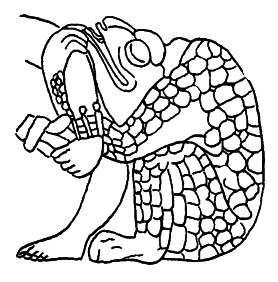
++
Copyleft,
CC, Mitzub'ixi Quq Chi'j, 1996-2099